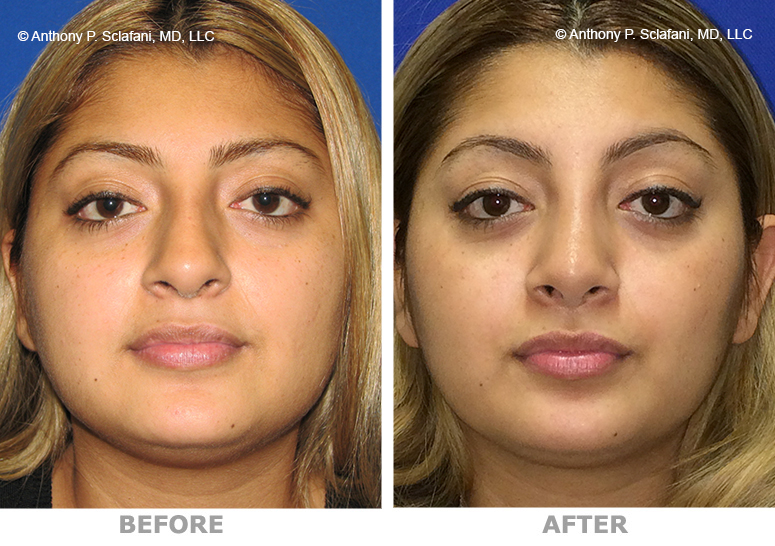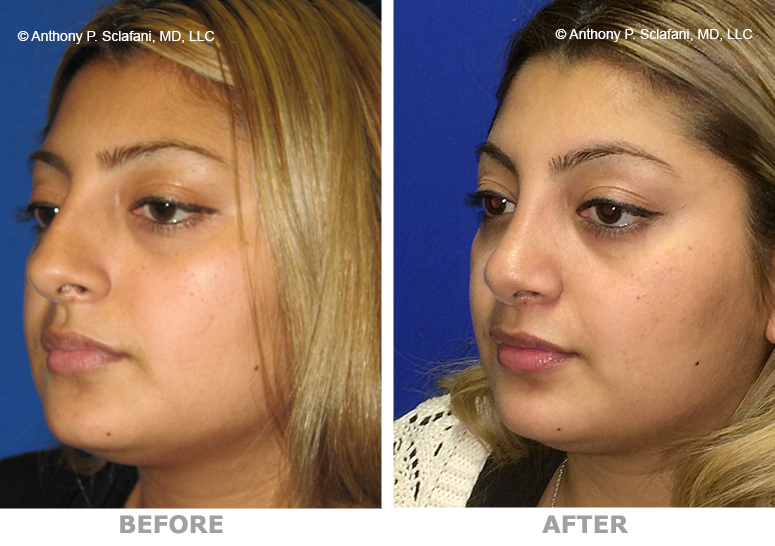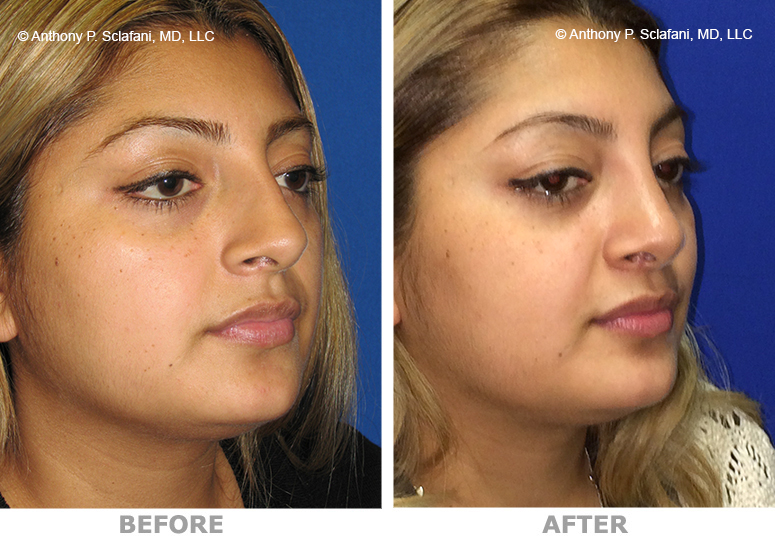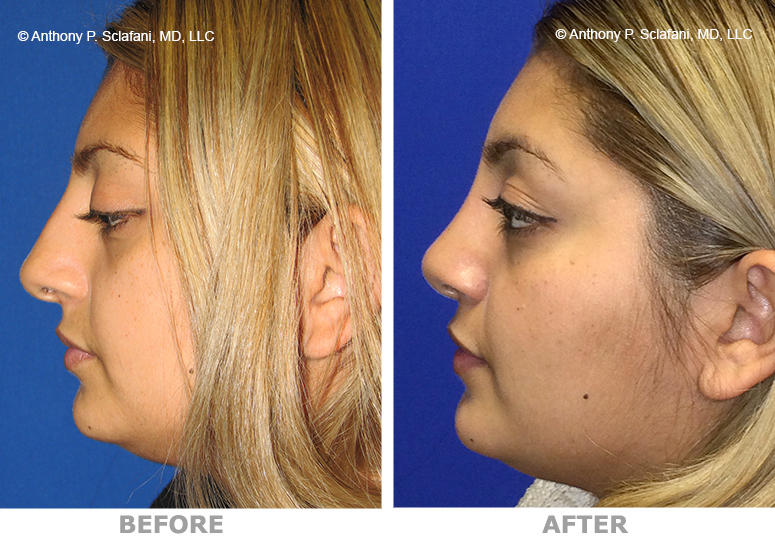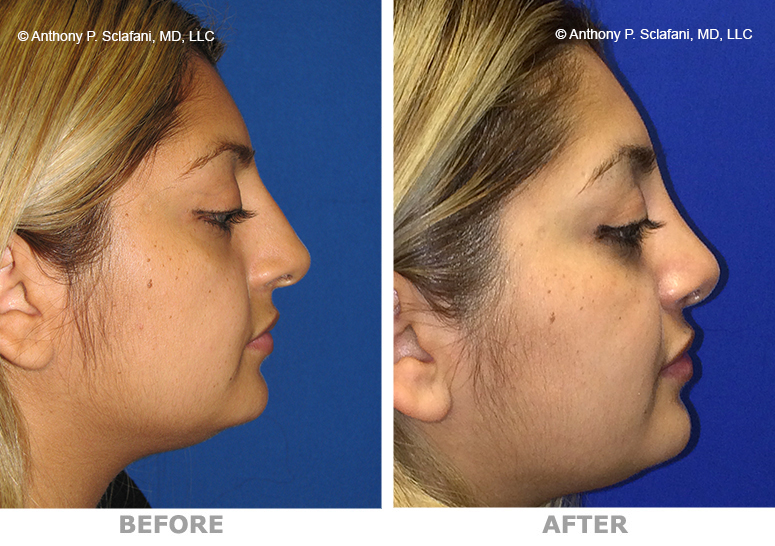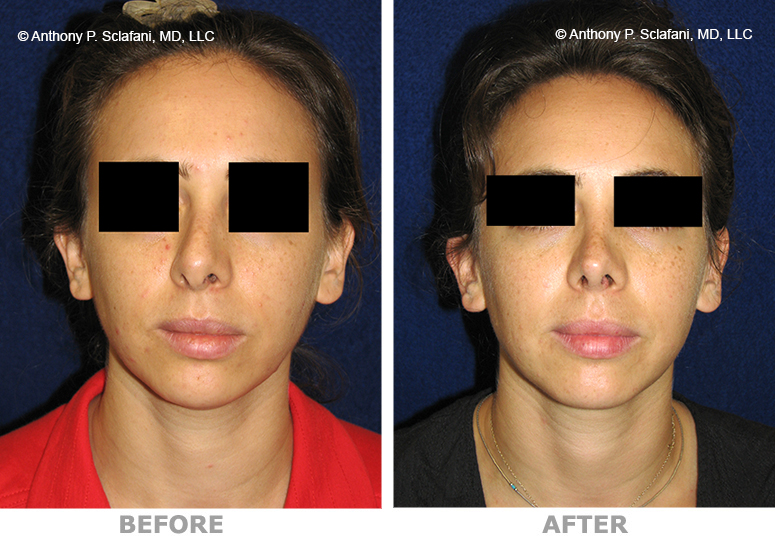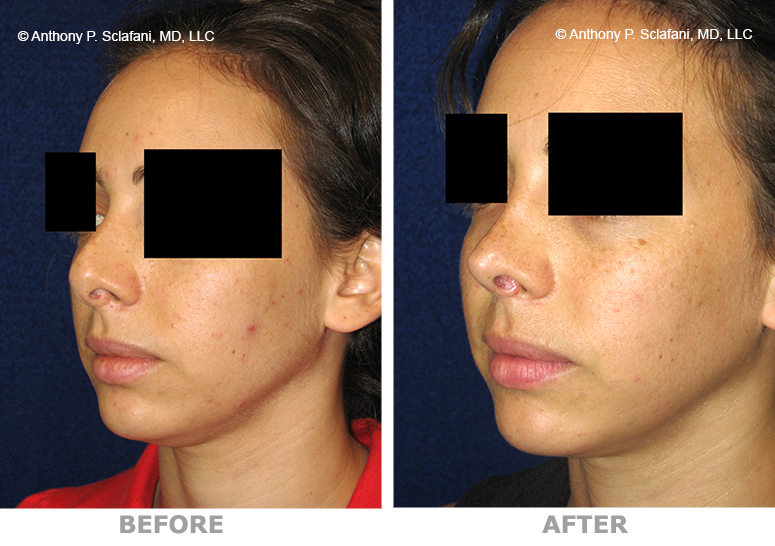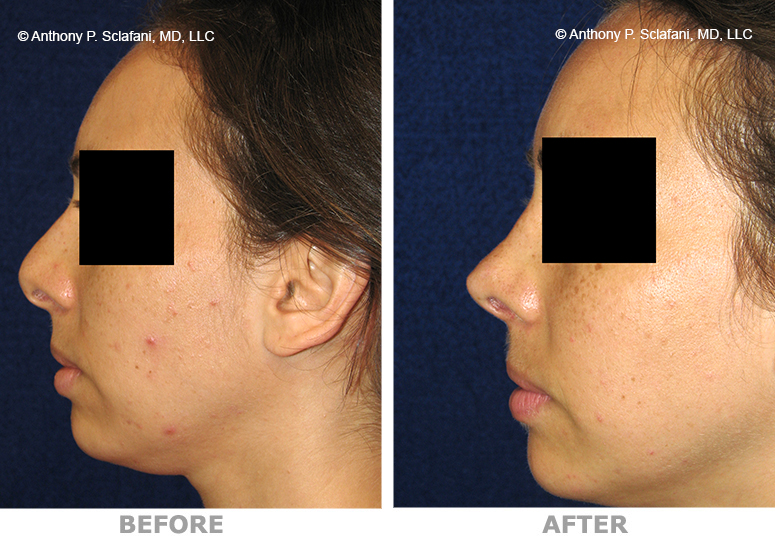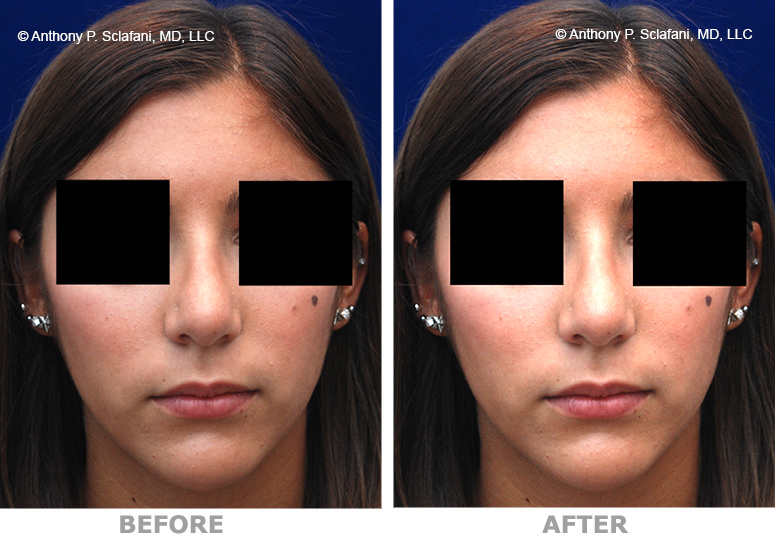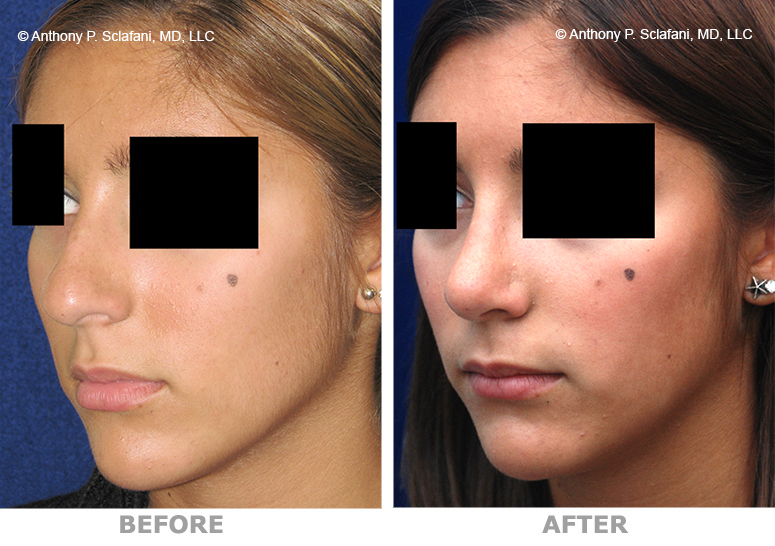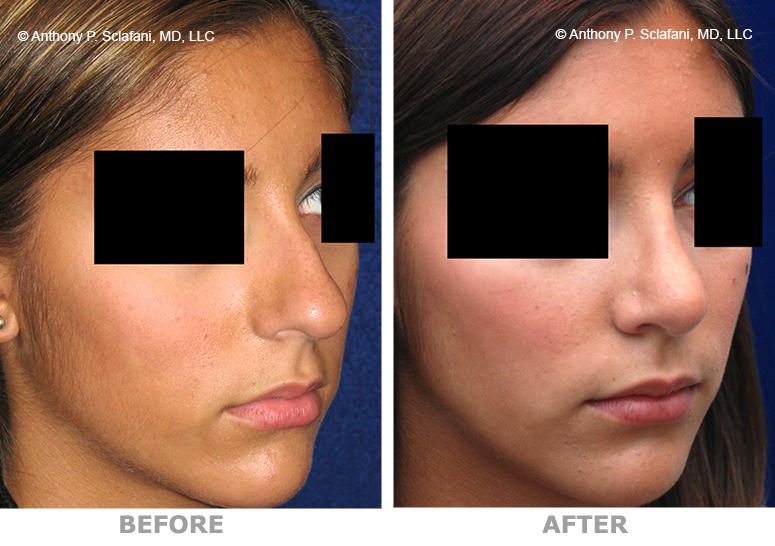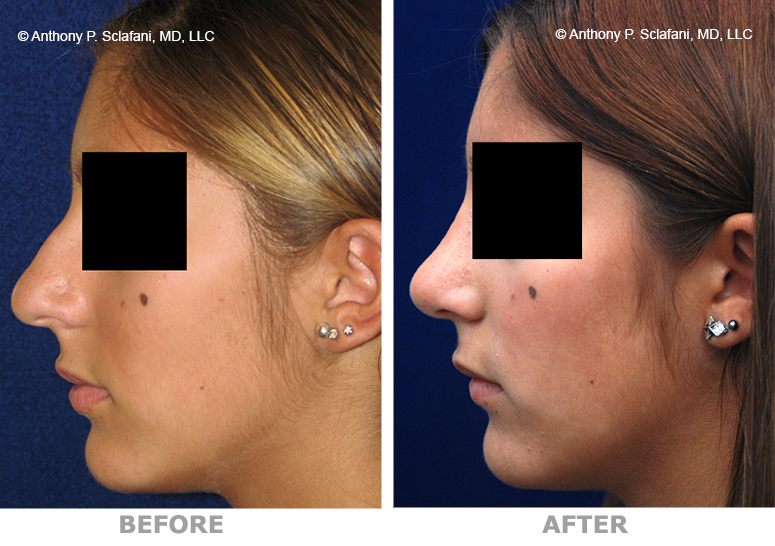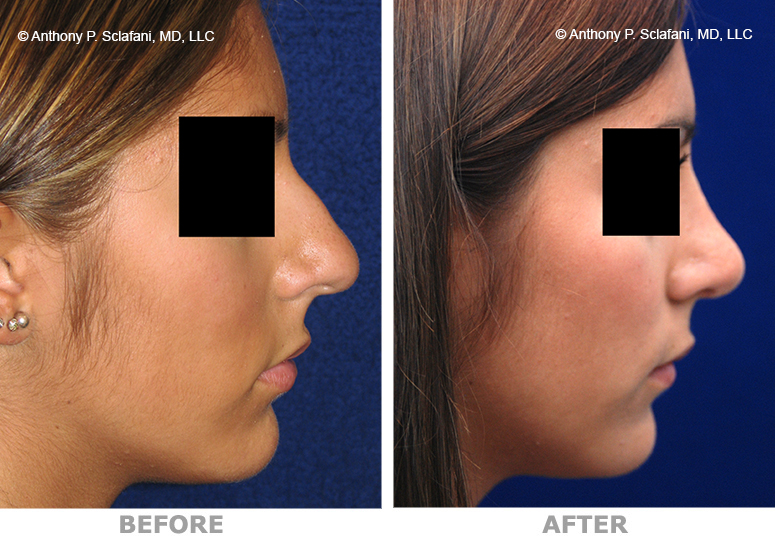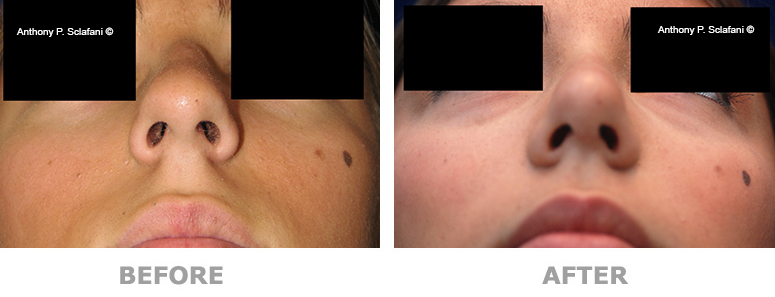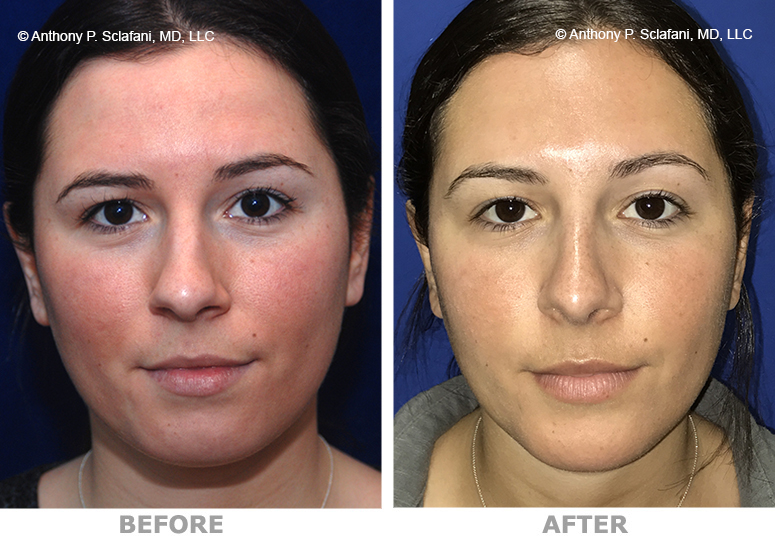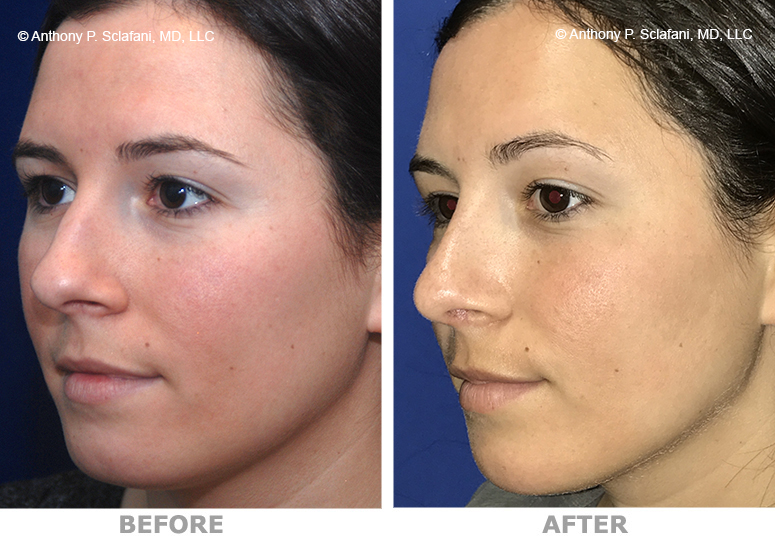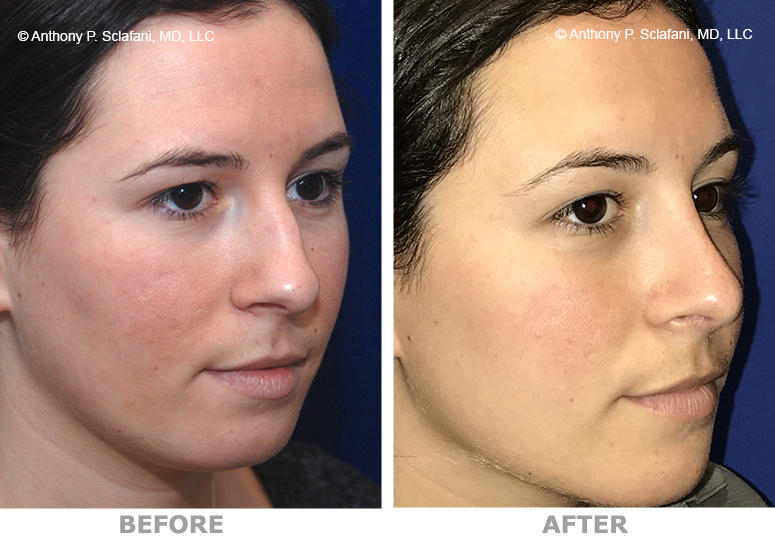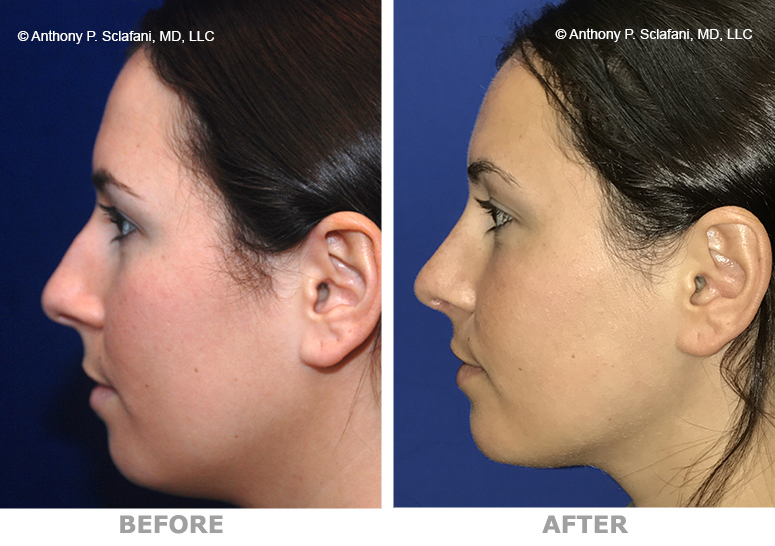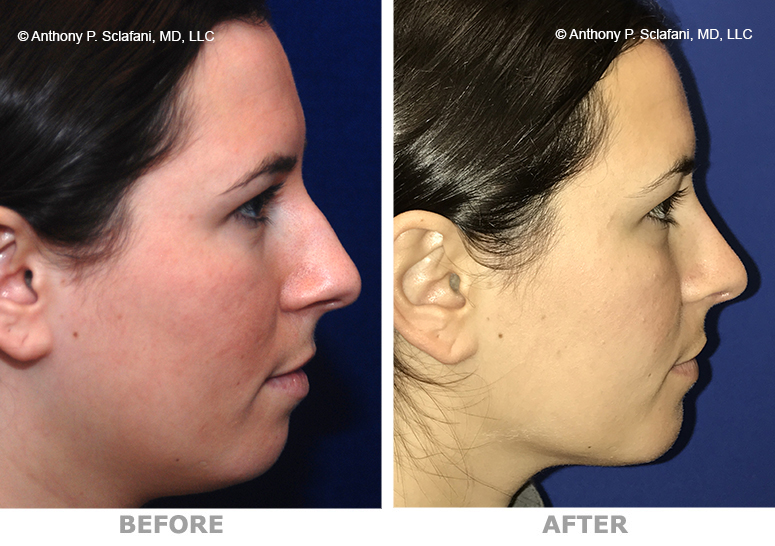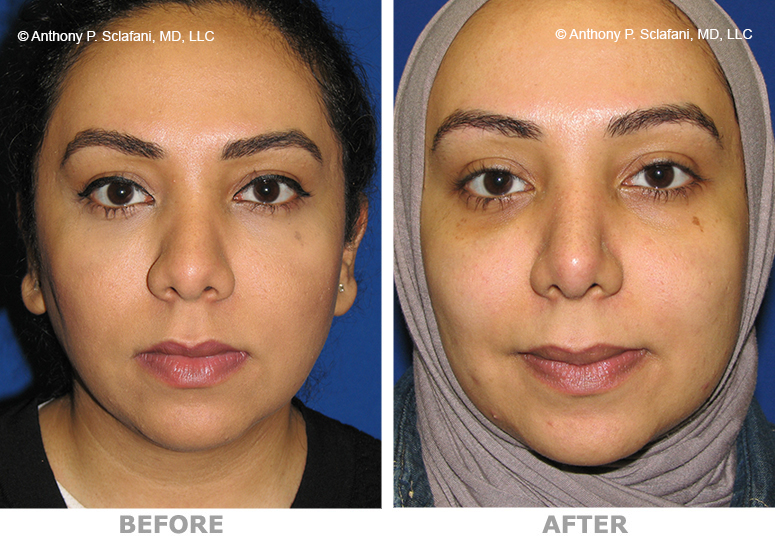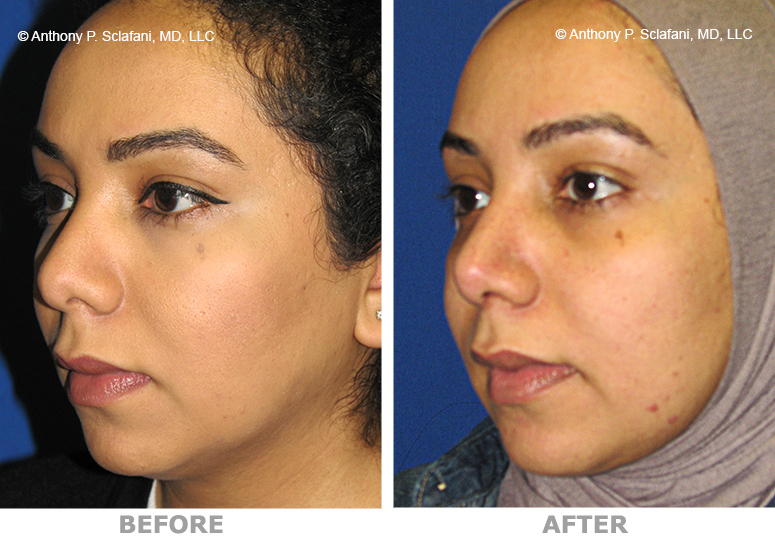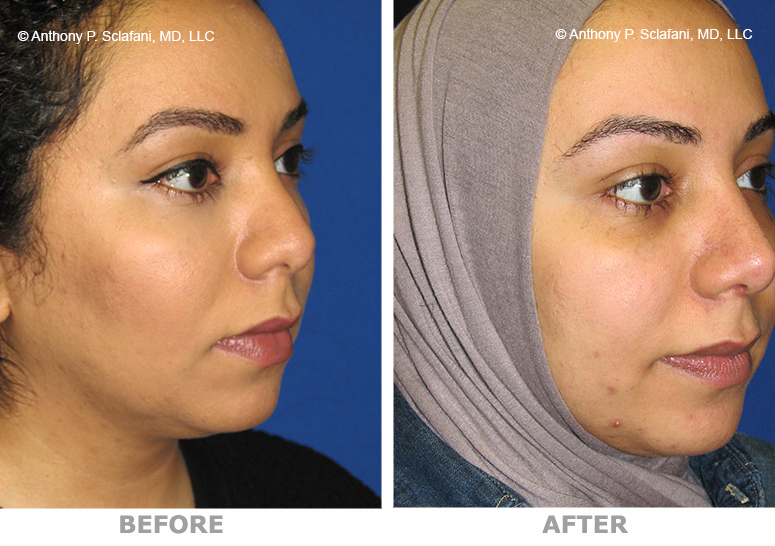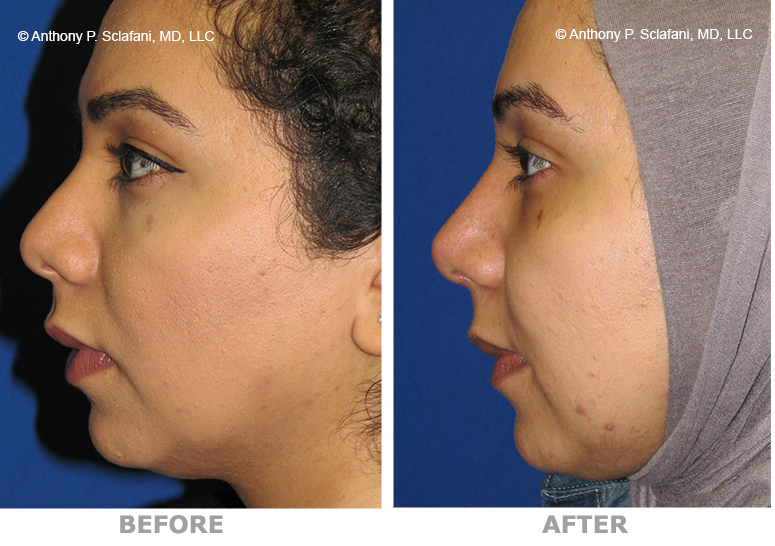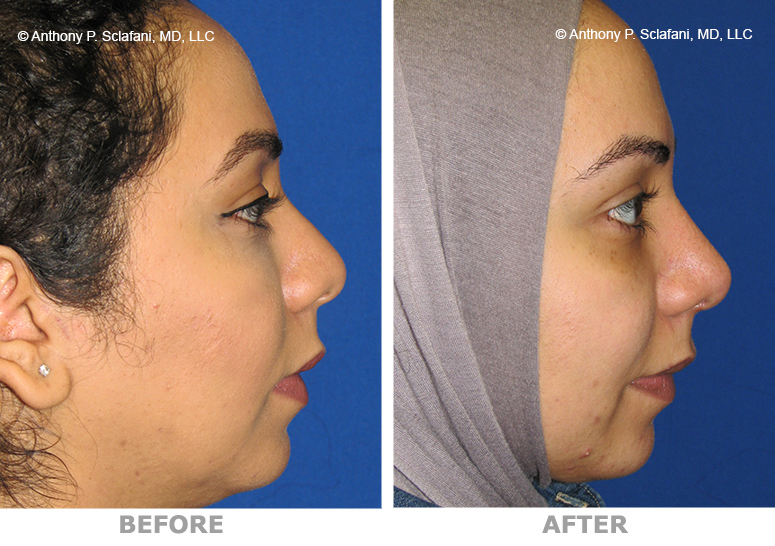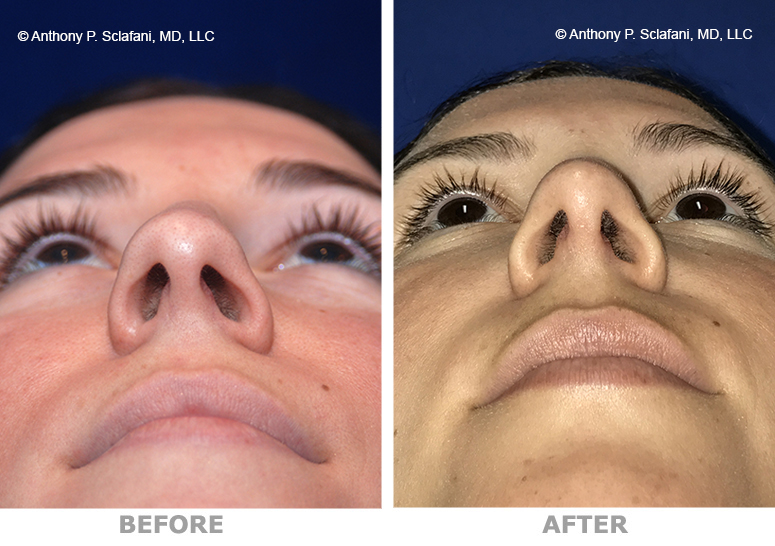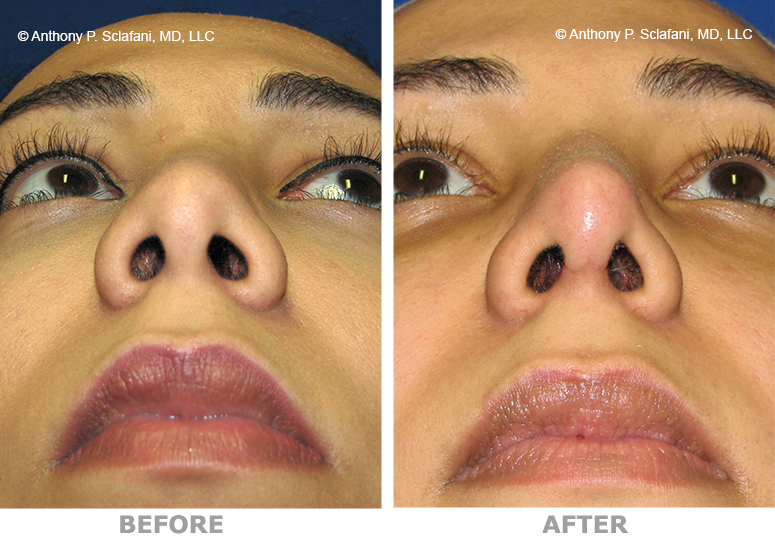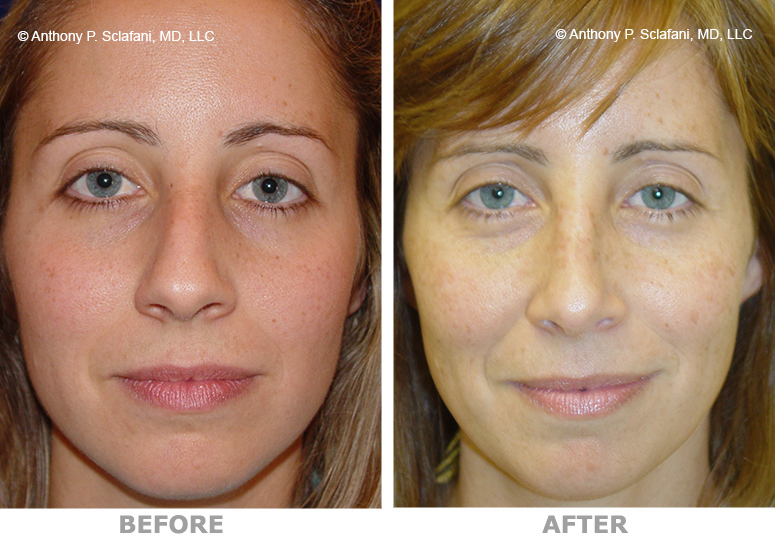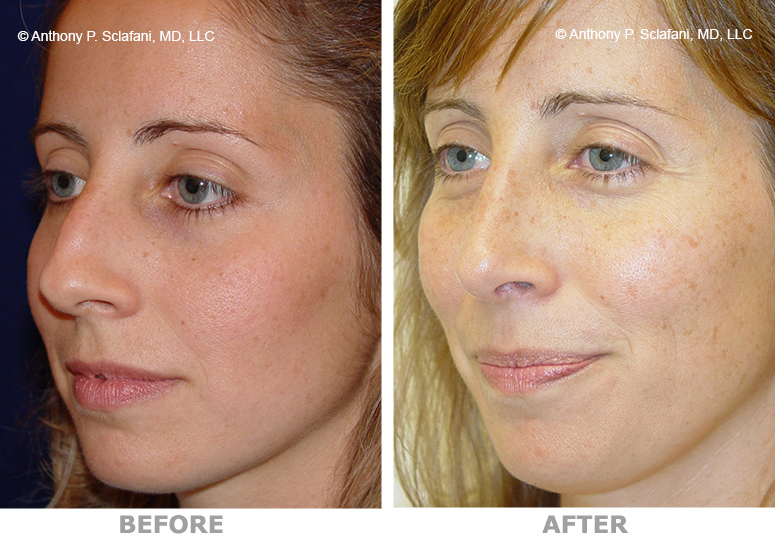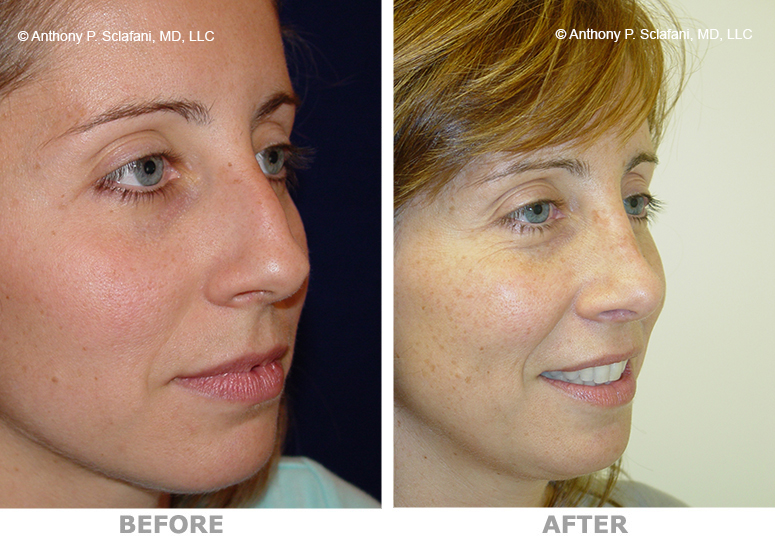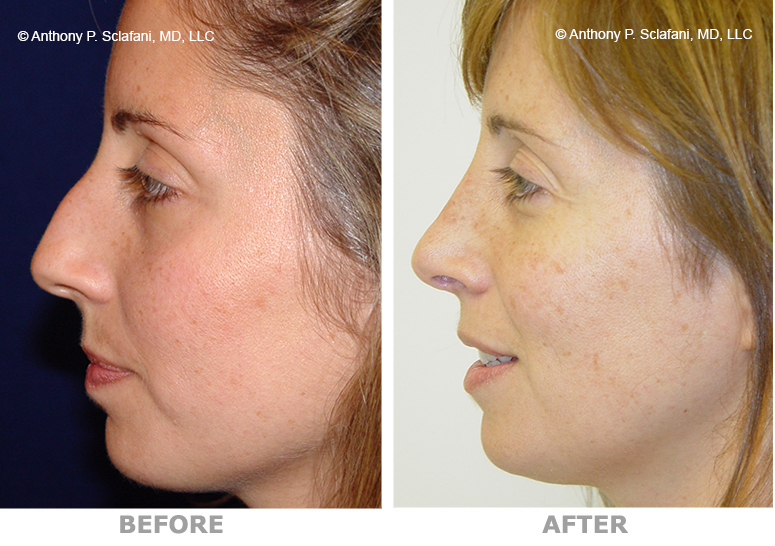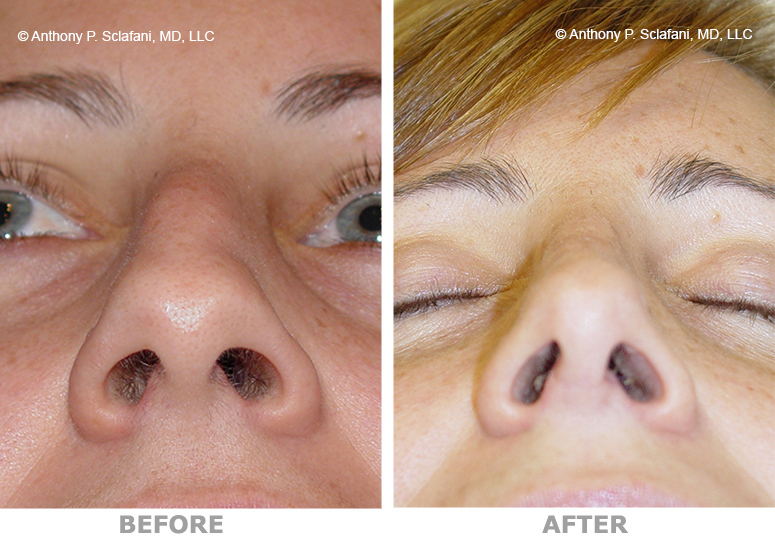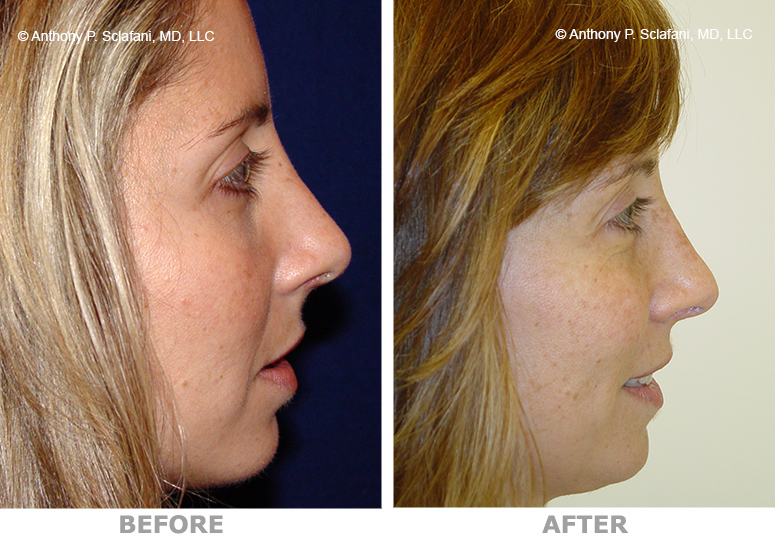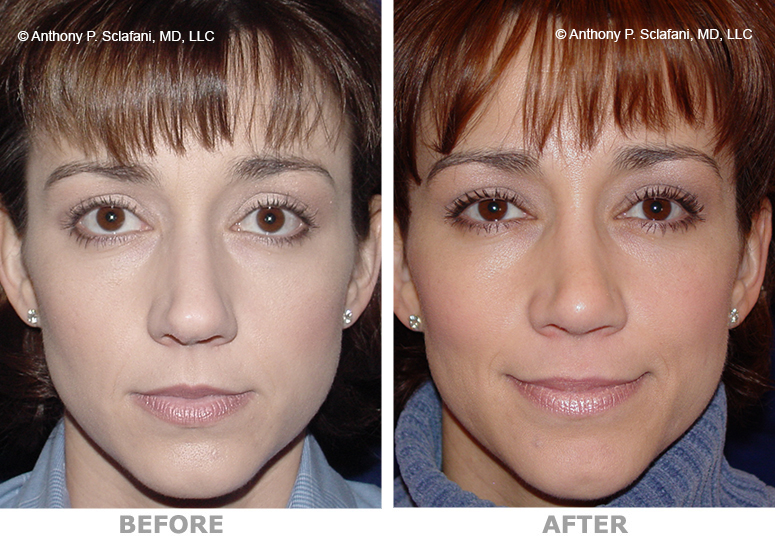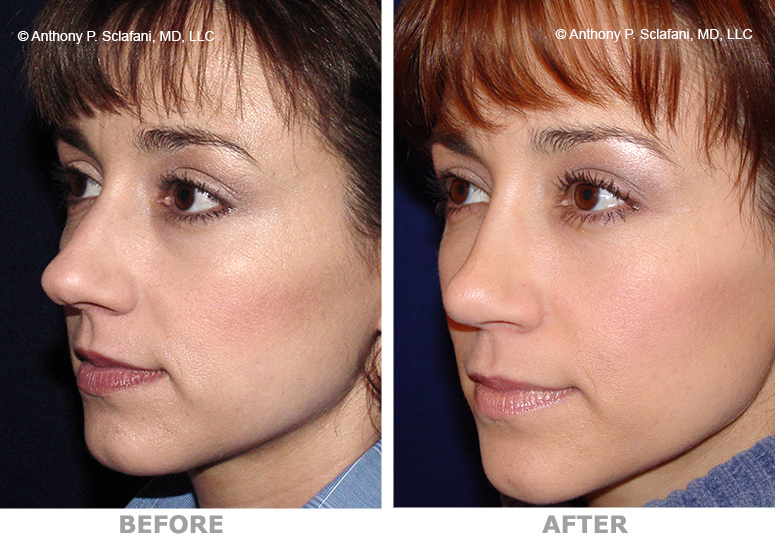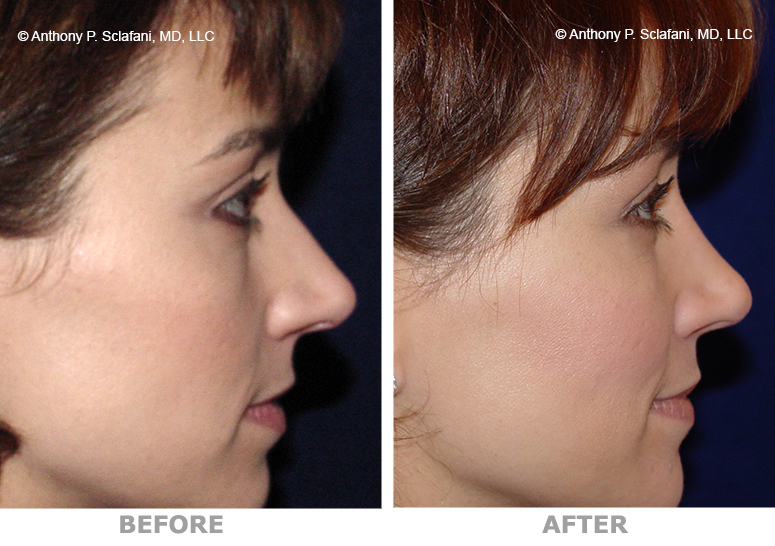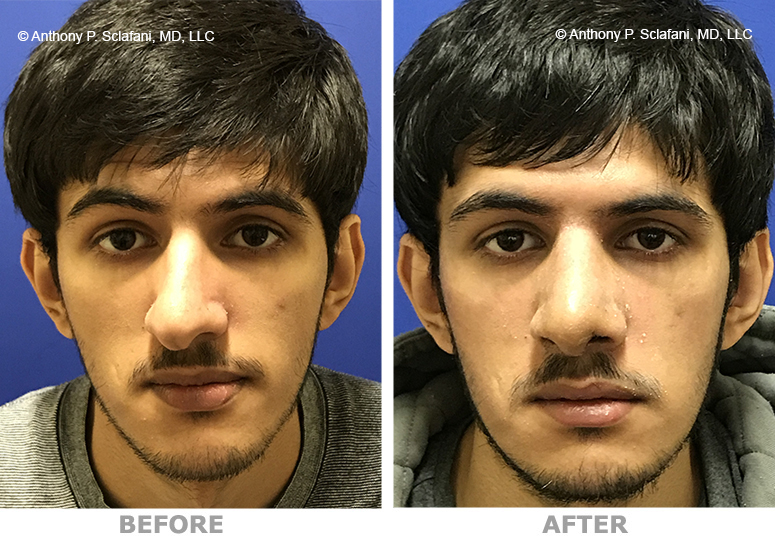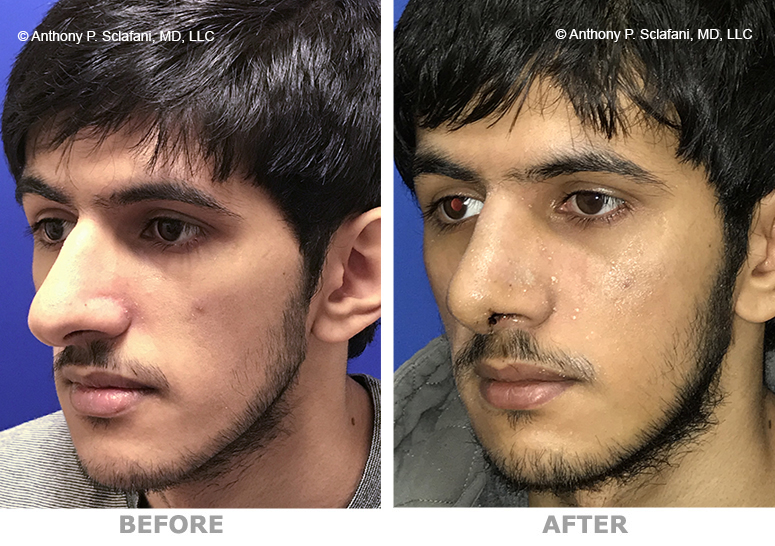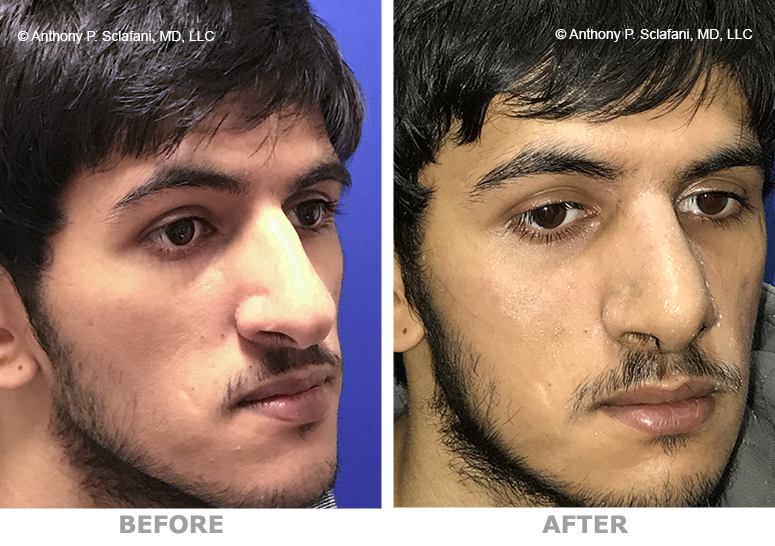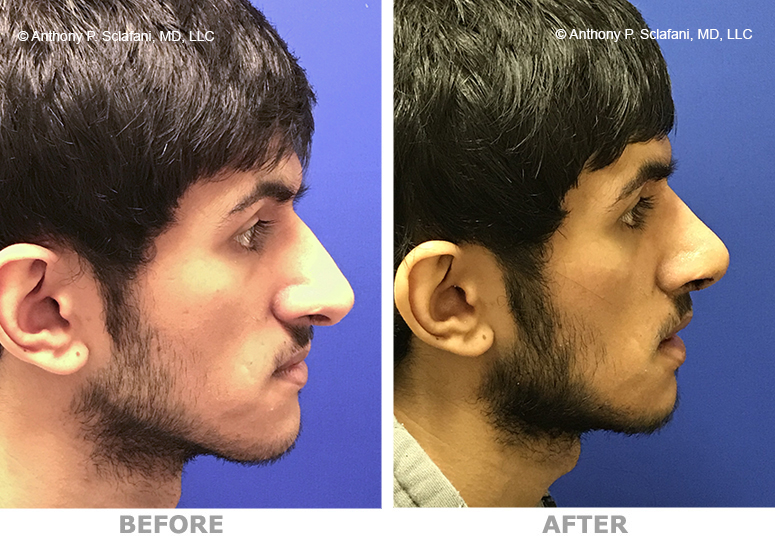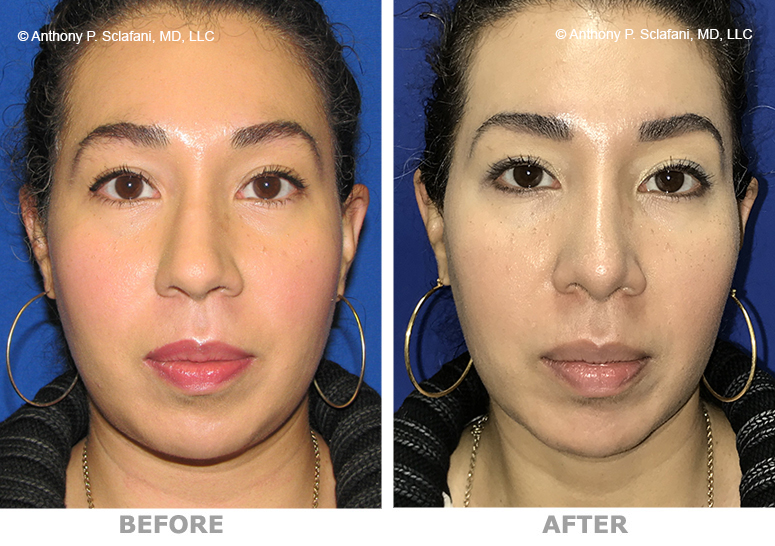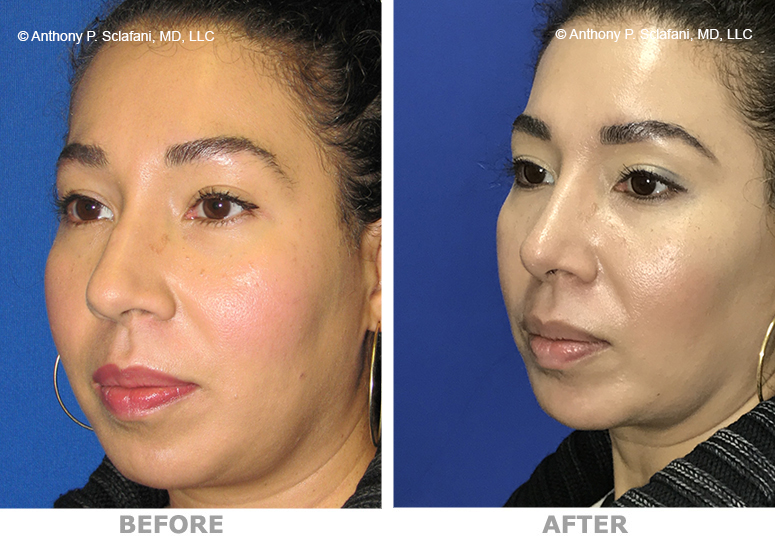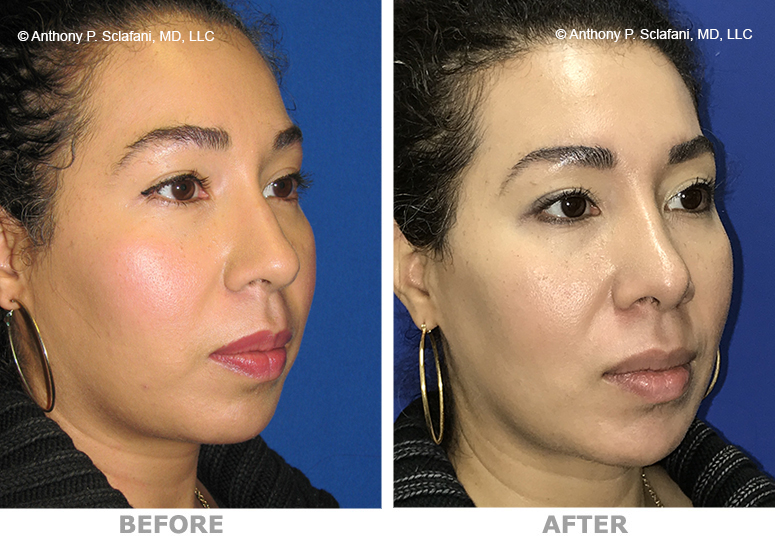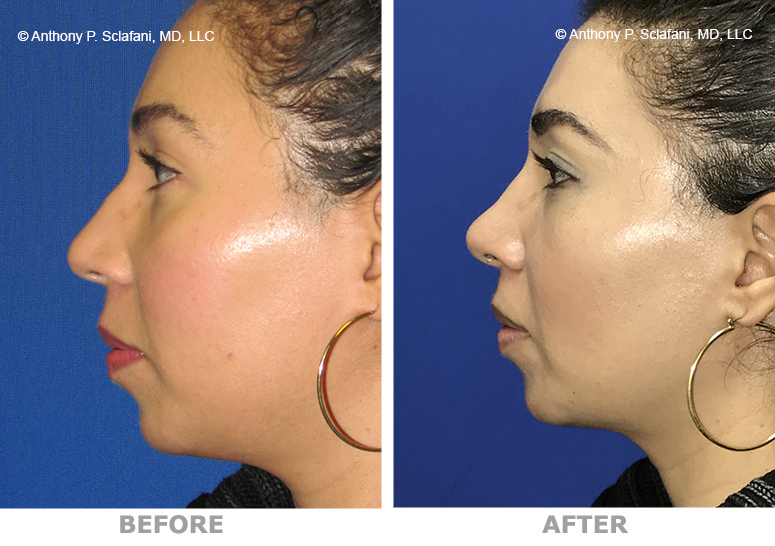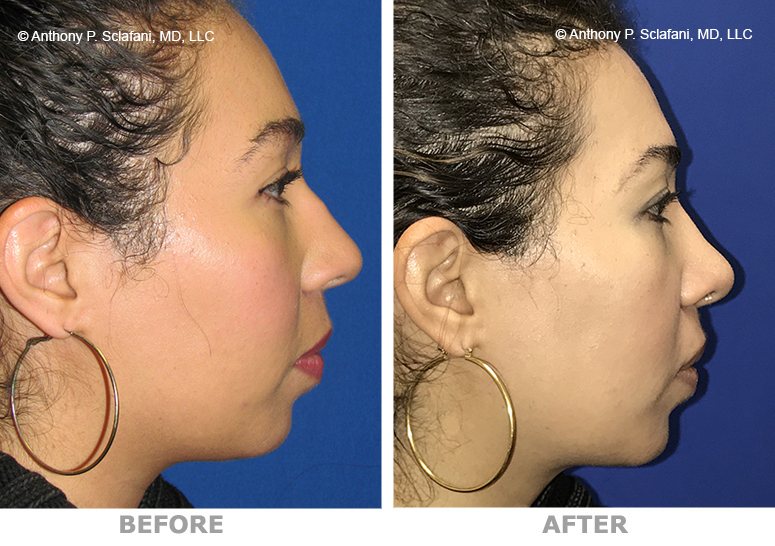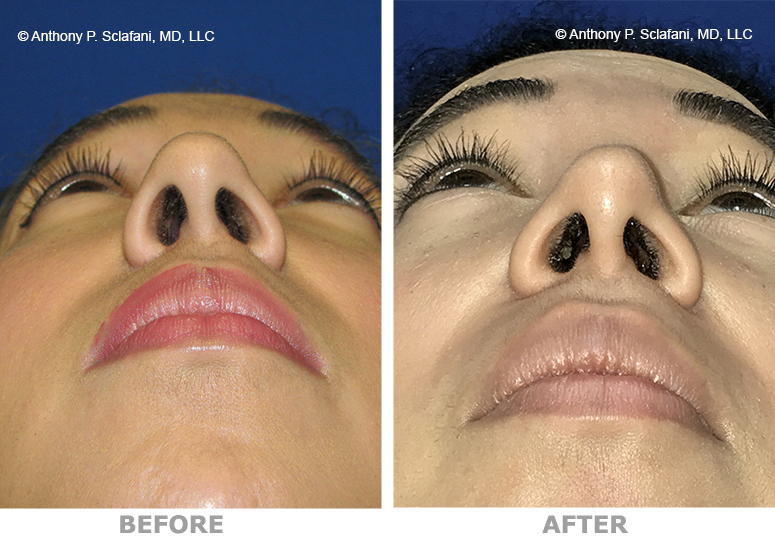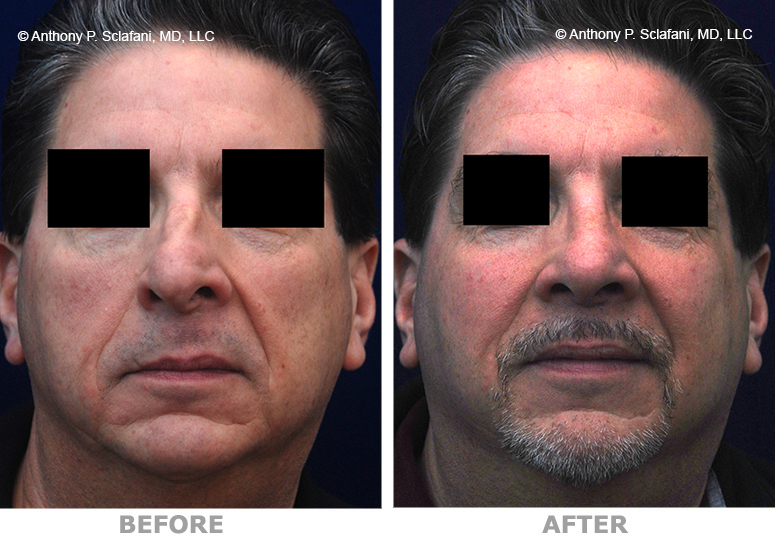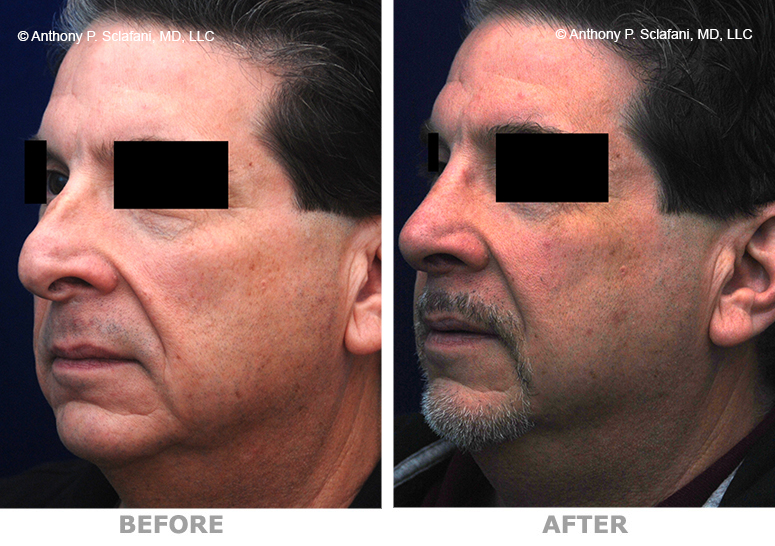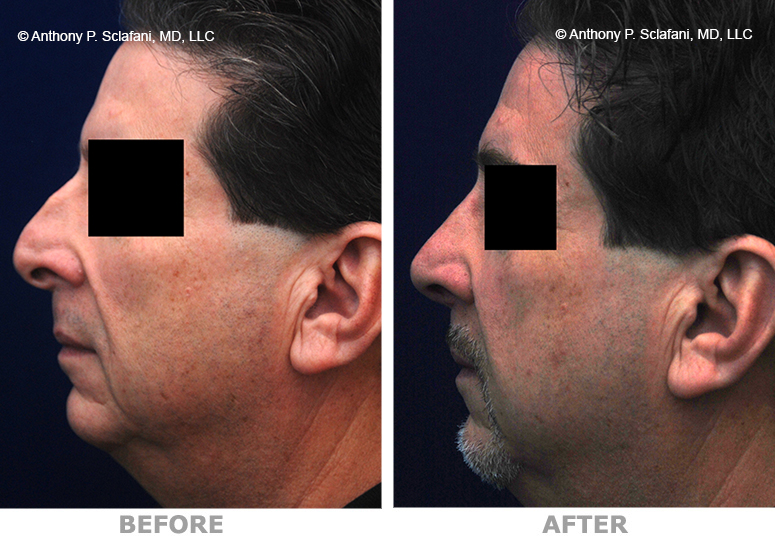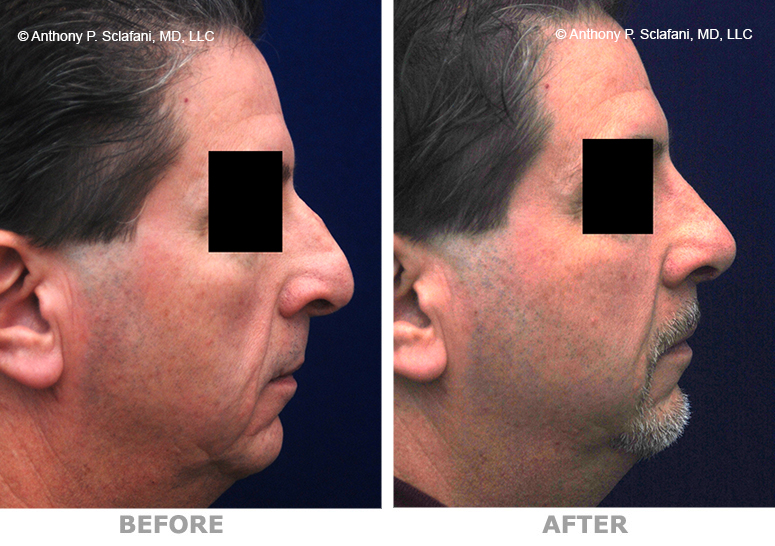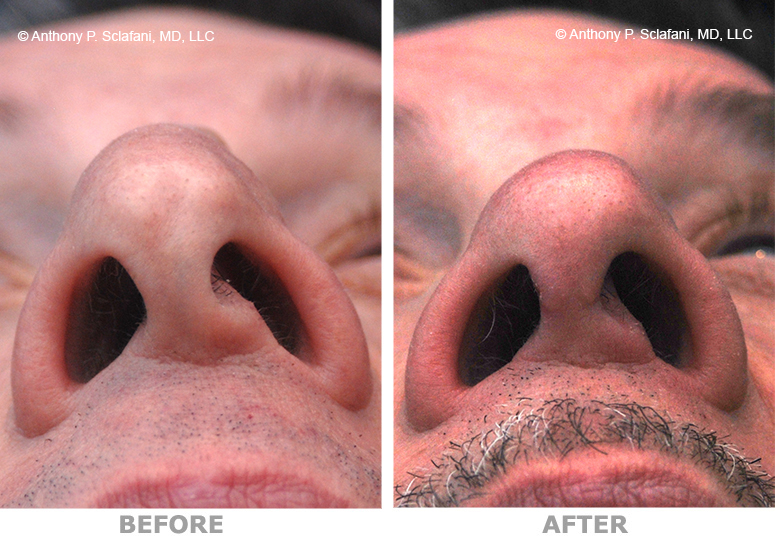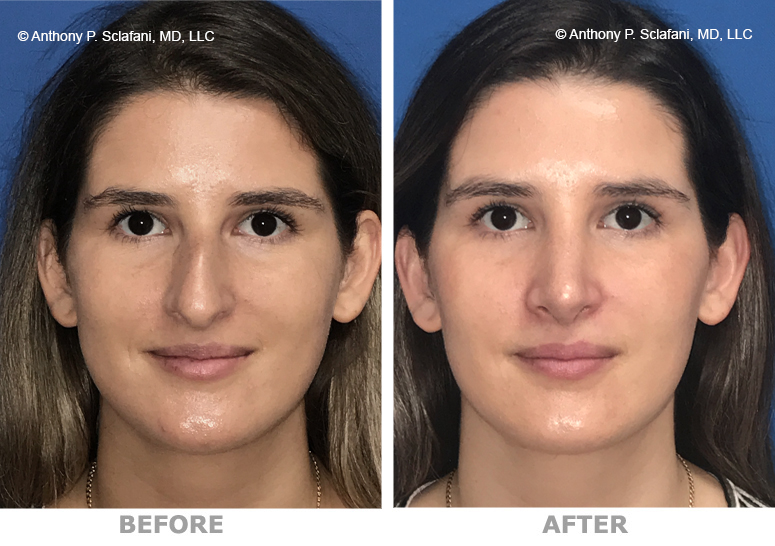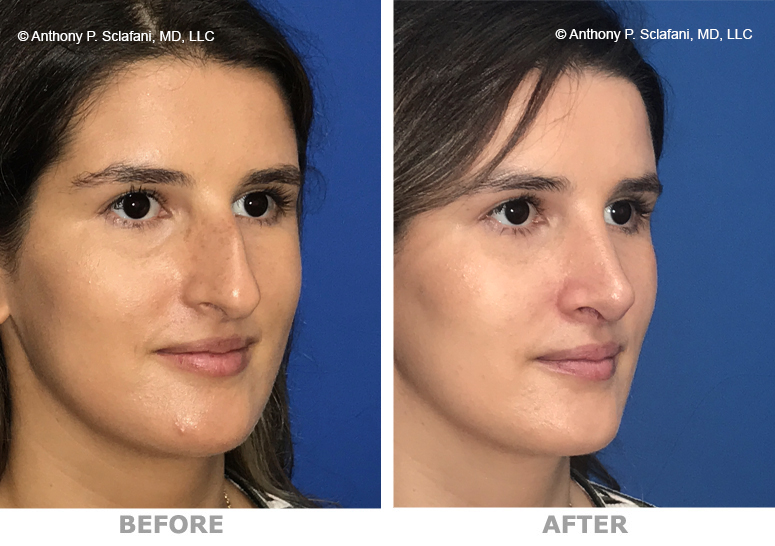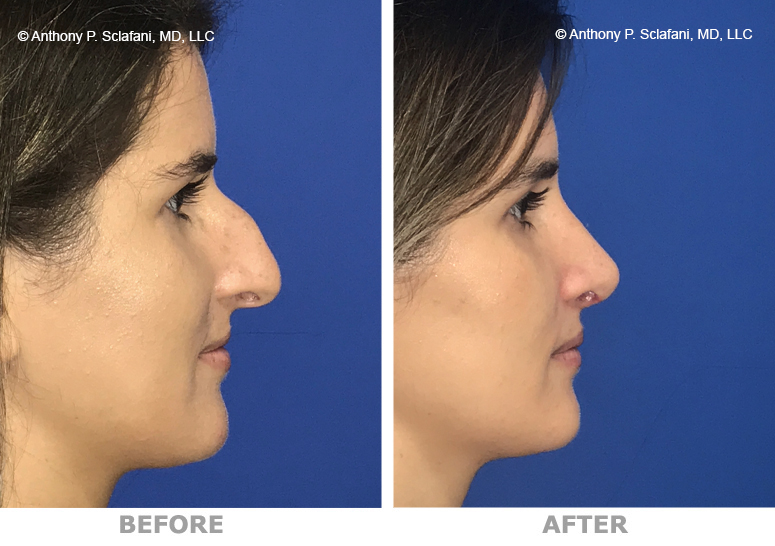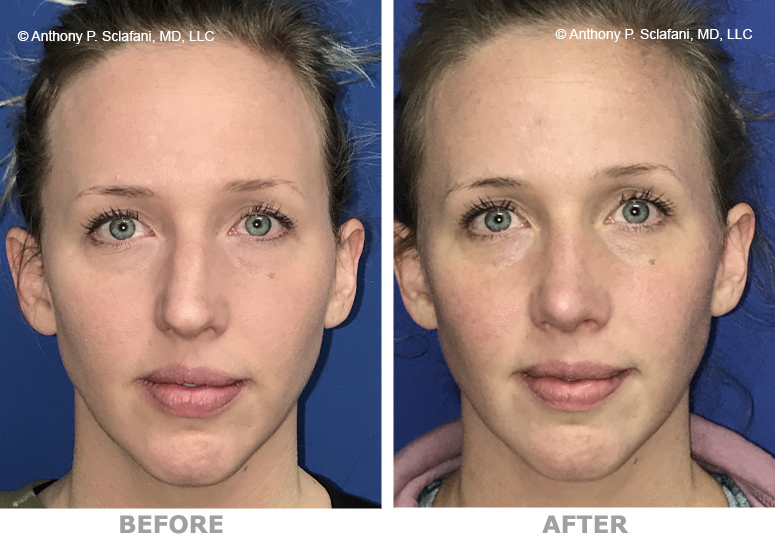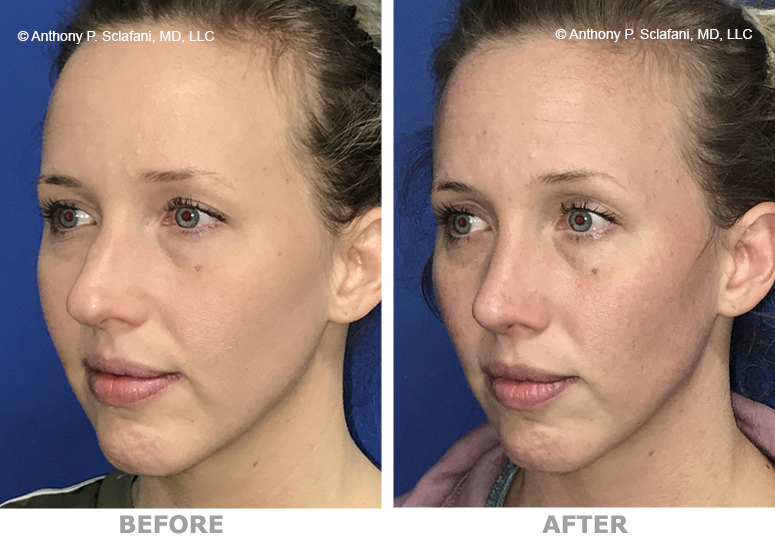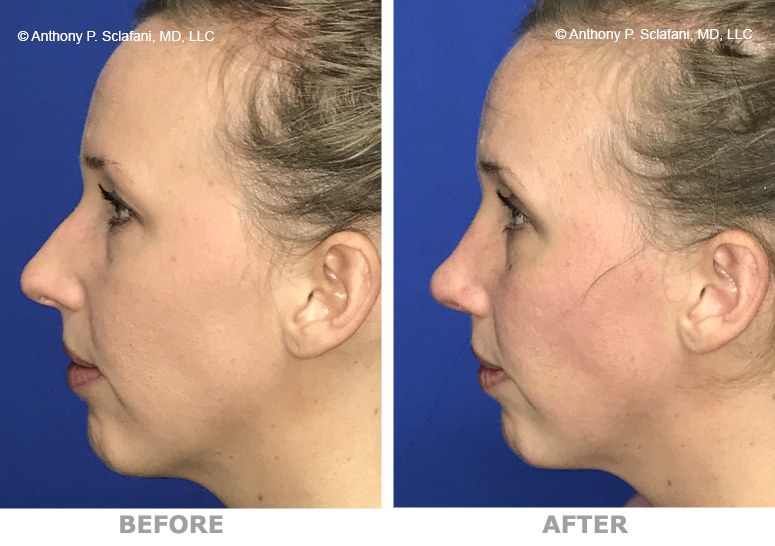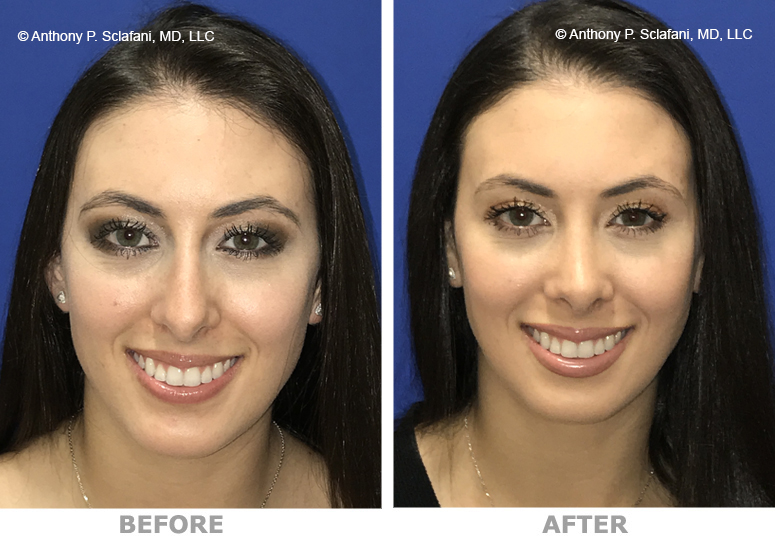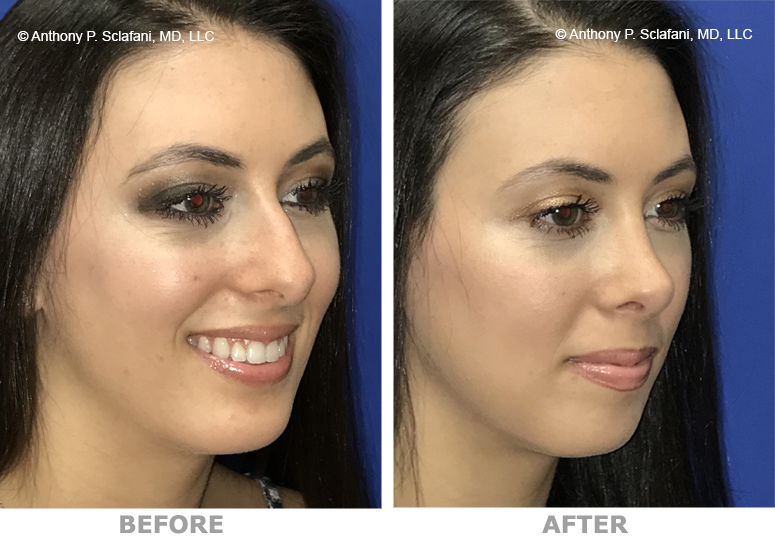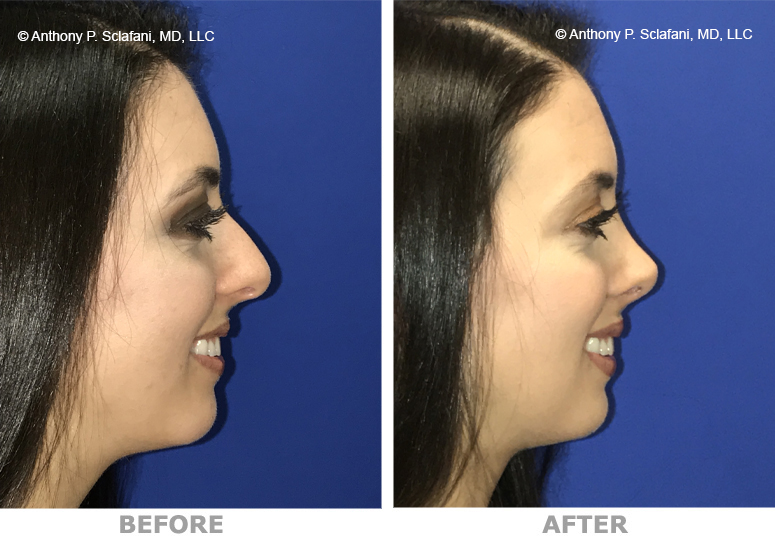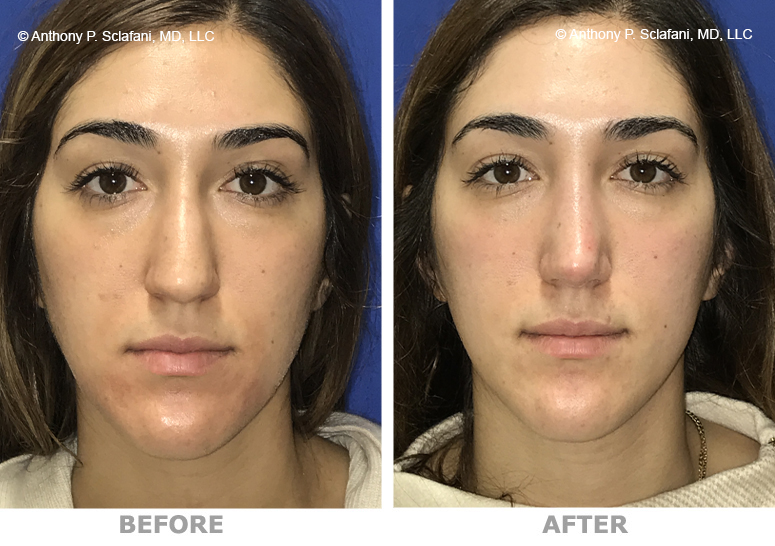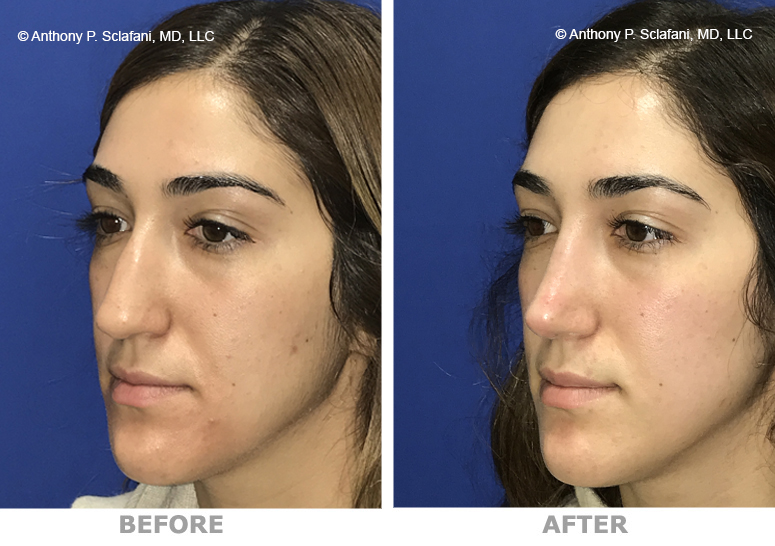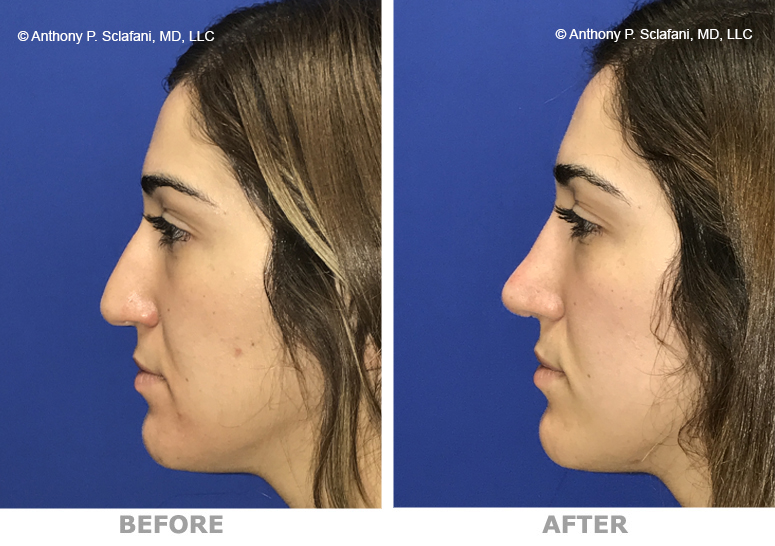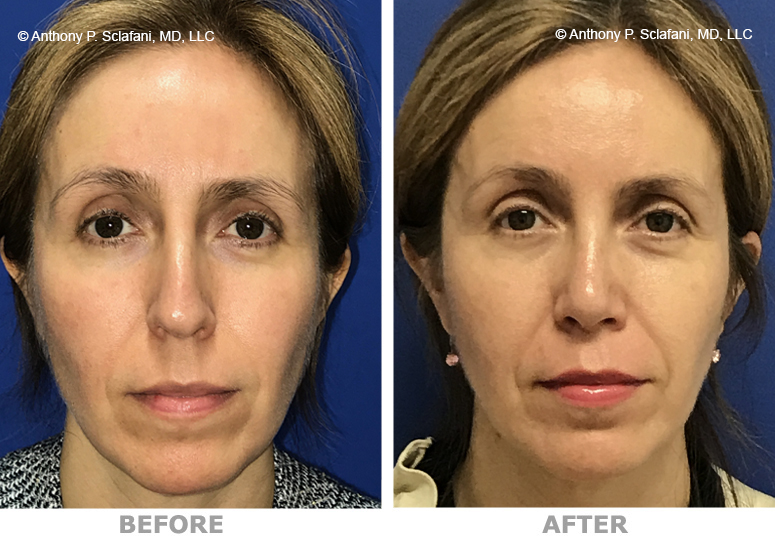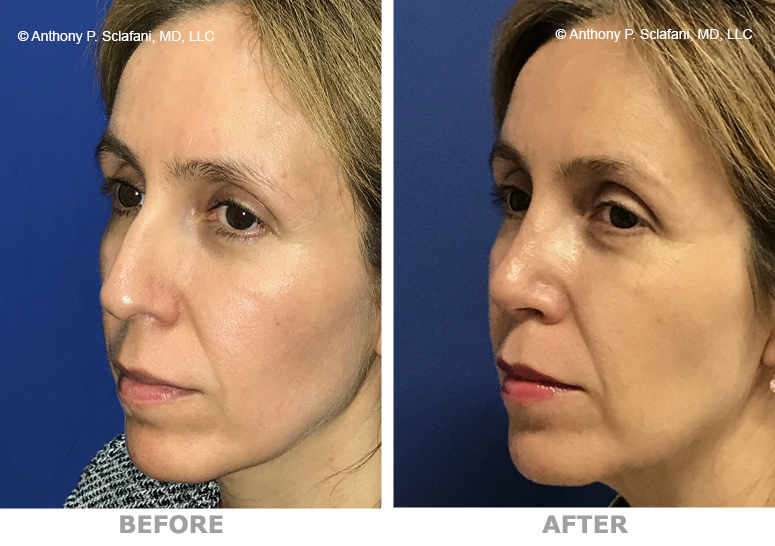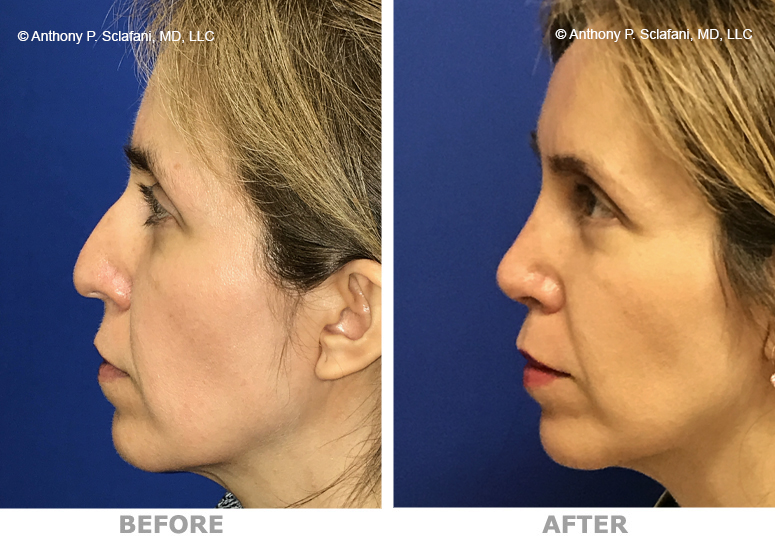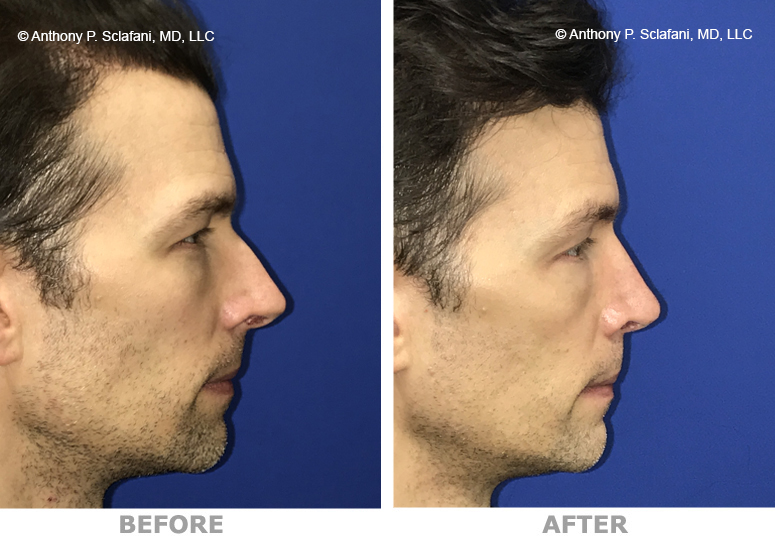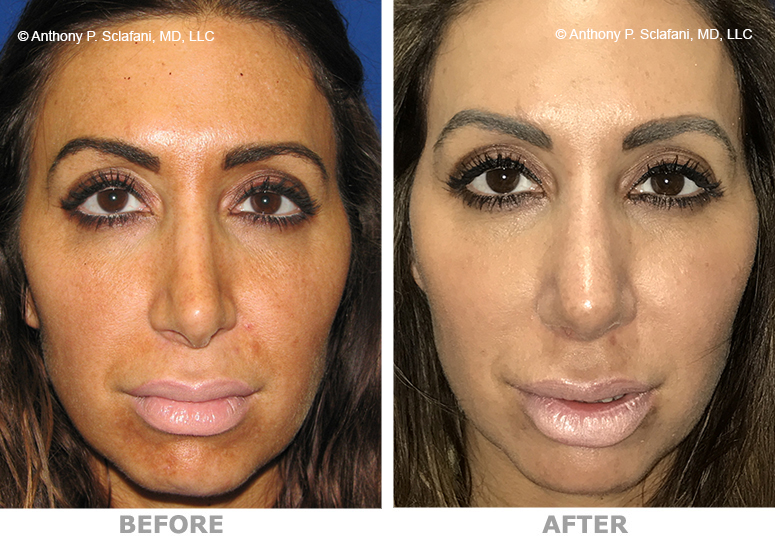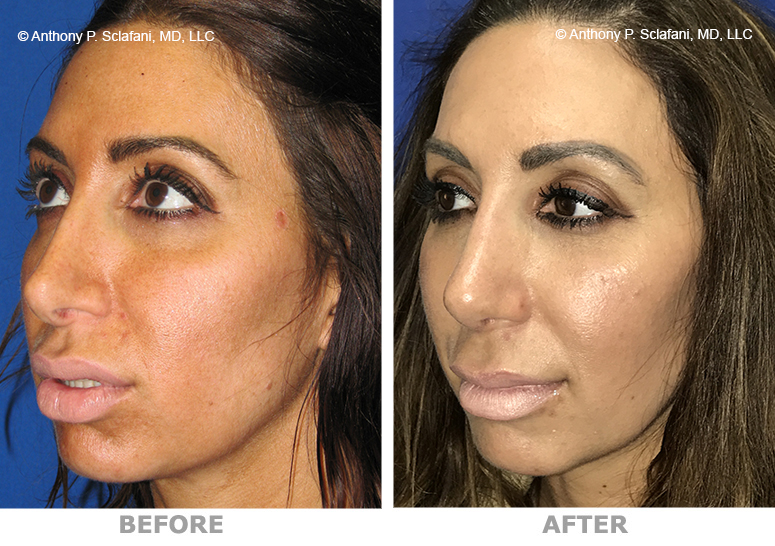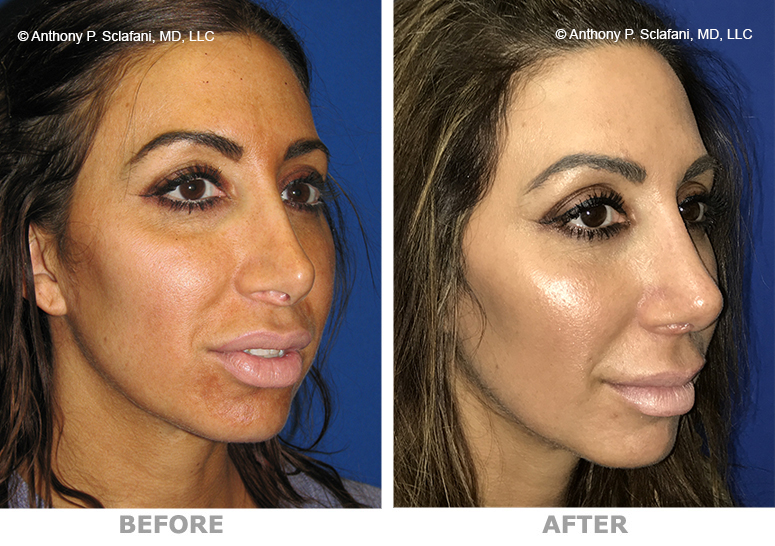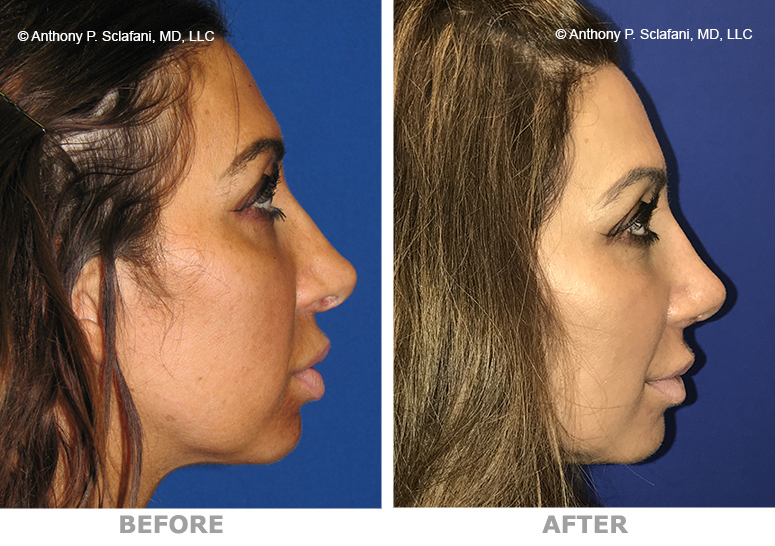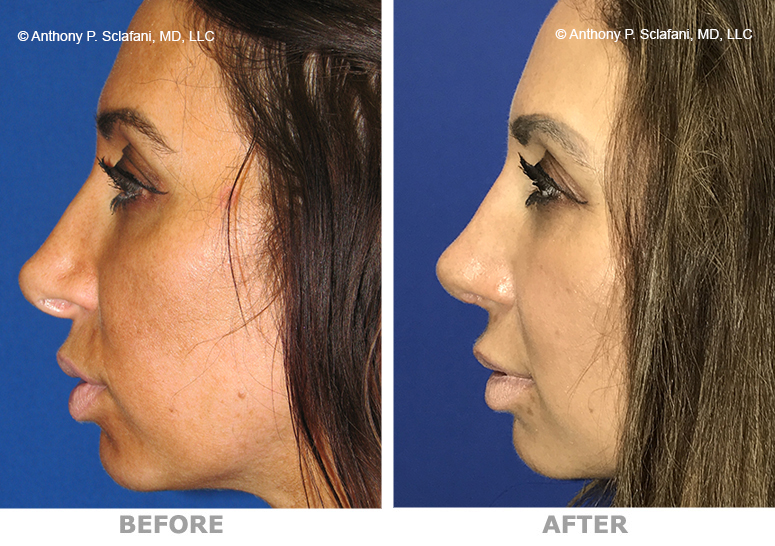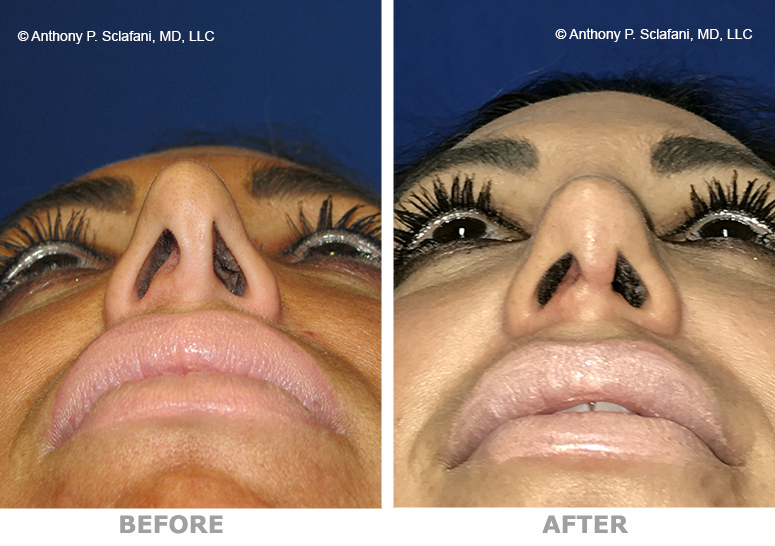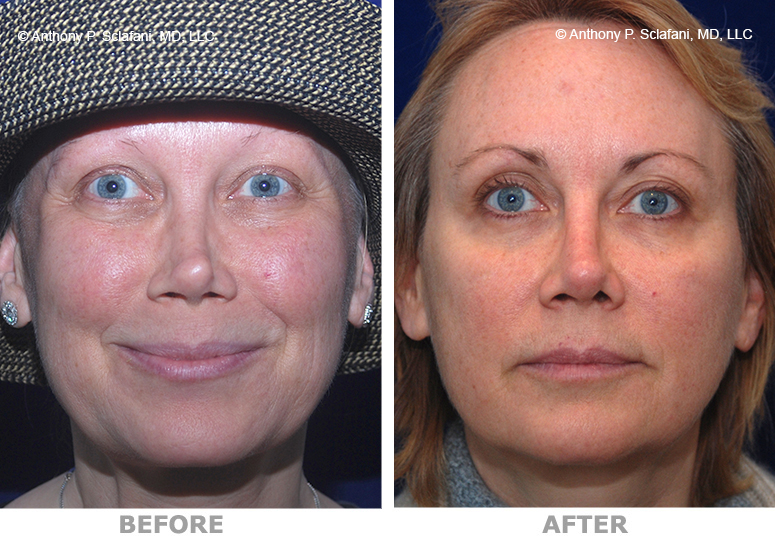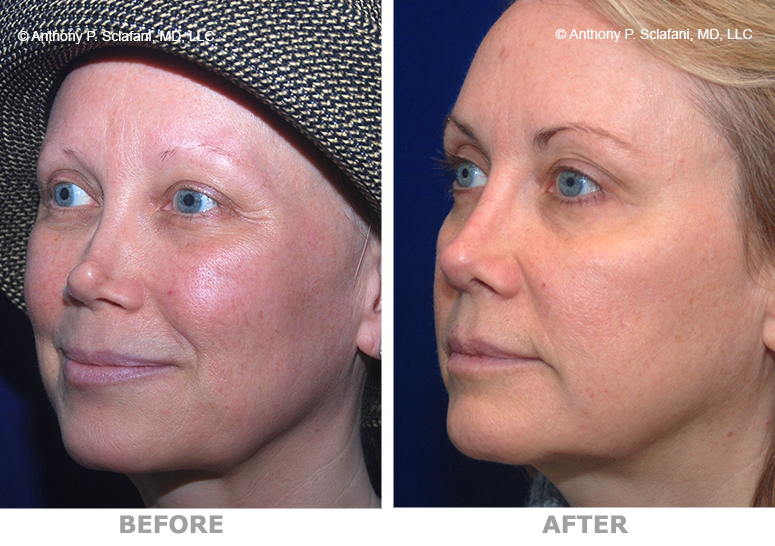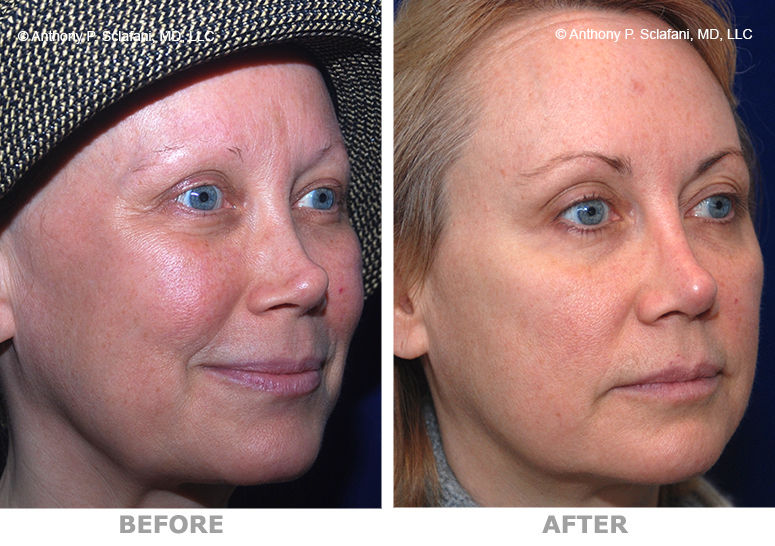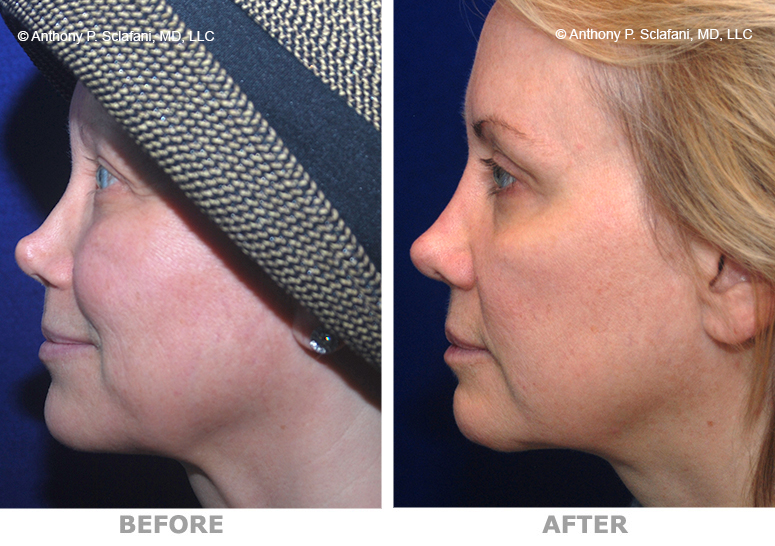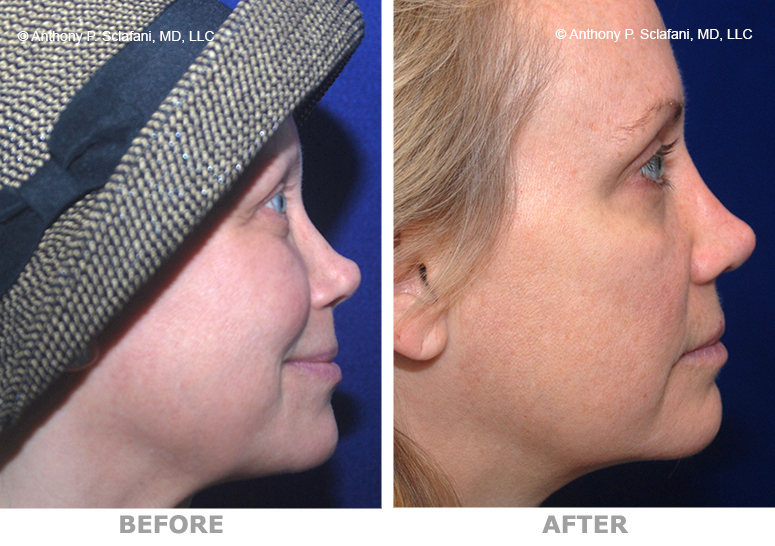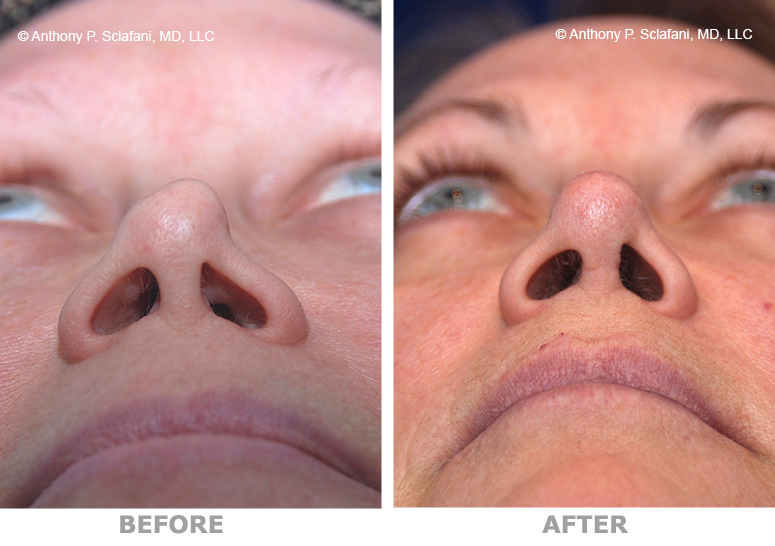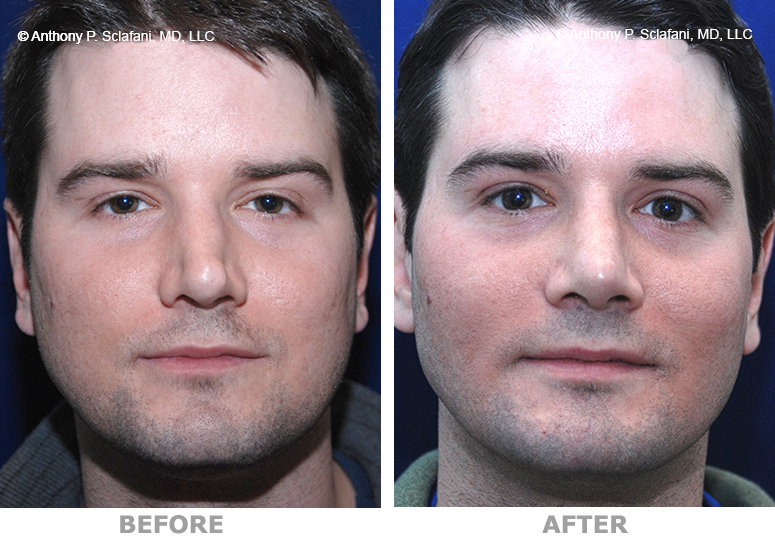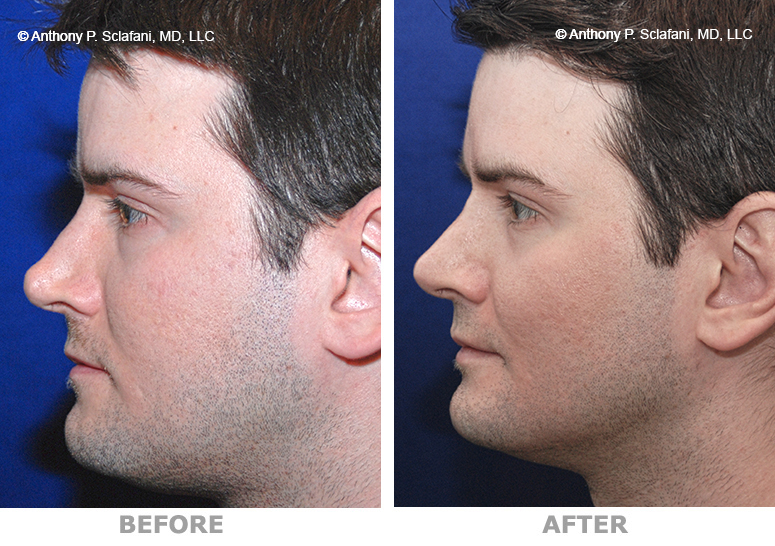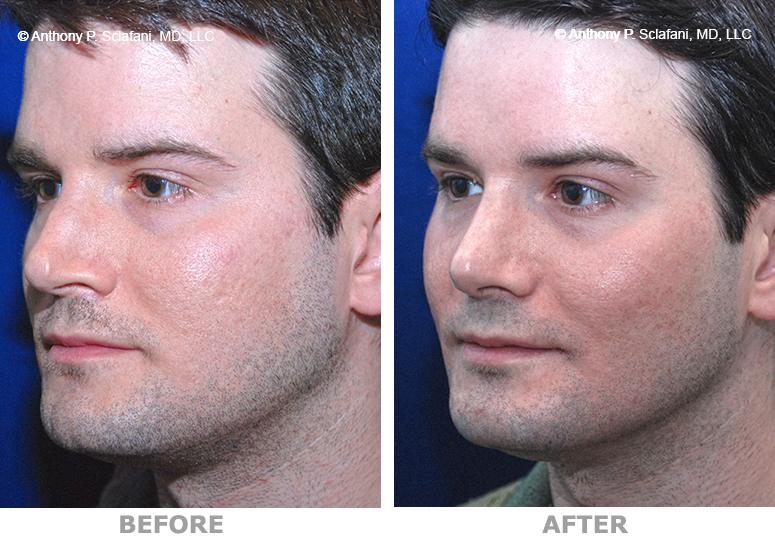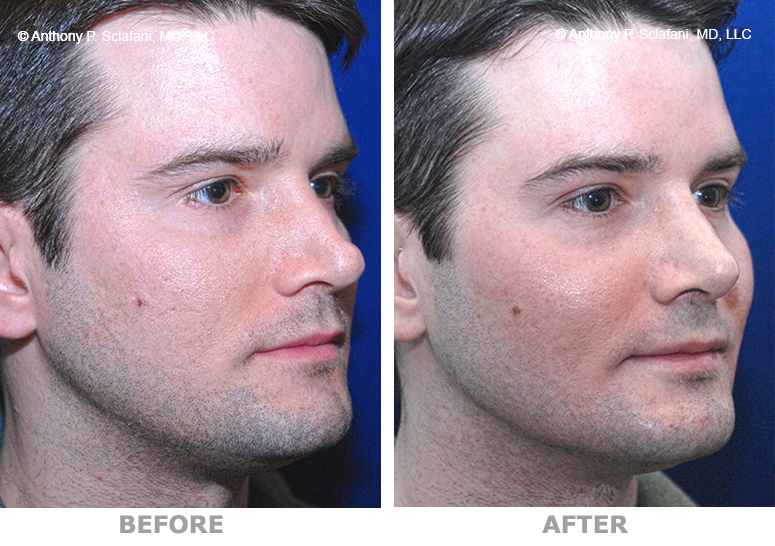NOSE

Nasal Surgery
The nose is the most central feature of the face. Modern nasal surgery takes into account the cosmetic appearance of the nose, but also seeks to improve the natural functions of the nose. The nose allows passage of air to the lungs, while filtering, warming and humidifying it.
There are many possible causes of nasal obstruction, including a deviated septum, enlarged turbinates or nasal valve collapse. The nasal septum is the internal wall that divides the left and right nasal passages. A deviation, or twist, of the septum can extend into the air passageway and give a sense of nasal congestion.
The inferior turbinates are "wings" of bone that extend from the sidewalls of the nose and are covered by mucus membranes. The mucus membranes covering the turbinates alternate in swelling; while one side swells, the other shrinks, usually every 3 to 4 hours. These bones are sometimes too large, or simply extend too directly into the airway. Depending on the specific problem, the turbinates can be pushed out of the airway or trimmed.
A collapsed nasal valve can be the result of surgery or trauma. Injury or weakening of the nasal cartilages of the tip or sidewalls can distort the appearance of the nose and cause nasal obstruction, which is often worse when breathing deeply.
RHINOPLASTY (NASAL SURGERY) Rhinoplasty is performed to establish a better balance between the nose and the rest of the face. Changes may be subtle or dramatic, and even slight changes can greatly enhance appearance. While nasal surgery can be combined with other procedures, it is frequently combined with chin or cheek augmentation.
Dr. Sclafani is frequently asked to correct other surgeons’ work. Often, he is called on to correct both the appearance of the nose as well as its function.
Shown here are before (left) and after (right) views of actual patients. Remember, every patient responds differently to surgery, and no one can be certain that he or she will get the results shown. However, these photos will illustrate the changes that are possible with these procedures.
A well performed rhinoplasty should integrate the nose optimally into the facial appearance. Dr. Sclafani makes a point of respecting the patients’ aesthetic goals and his results are tailored to the individual patient.
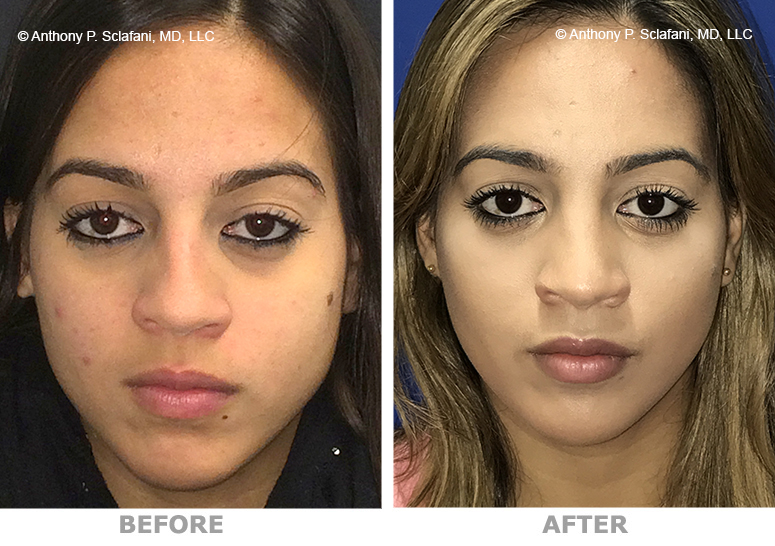
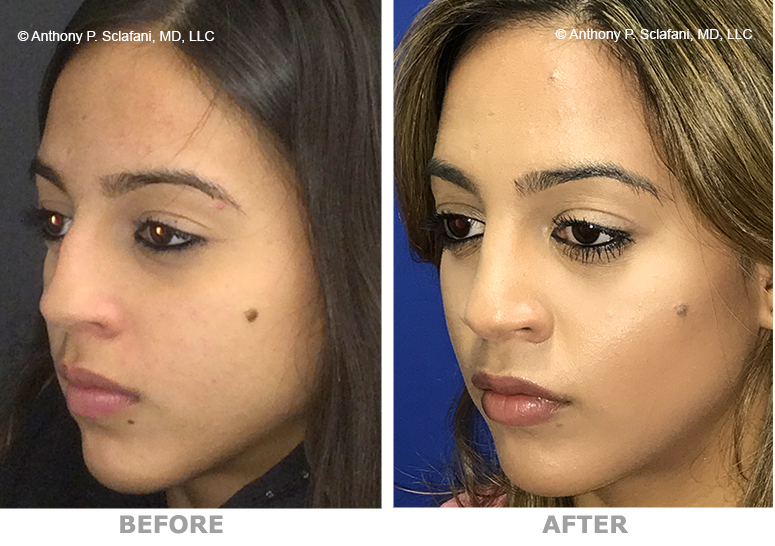
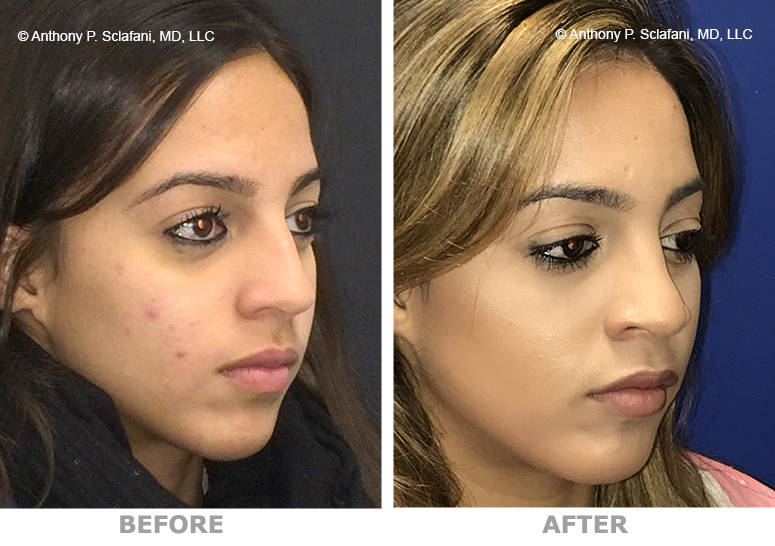
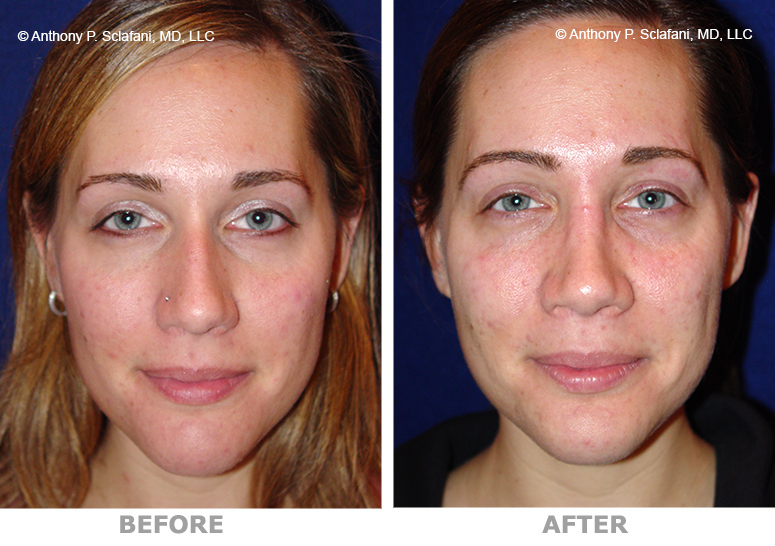
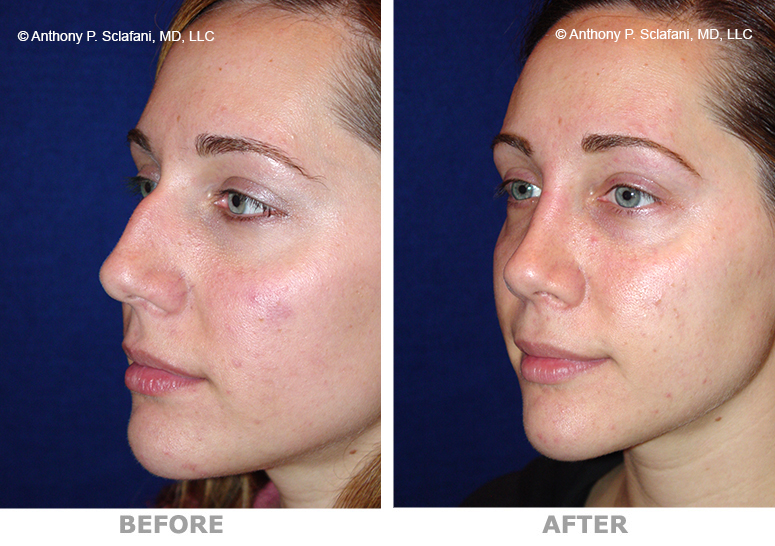
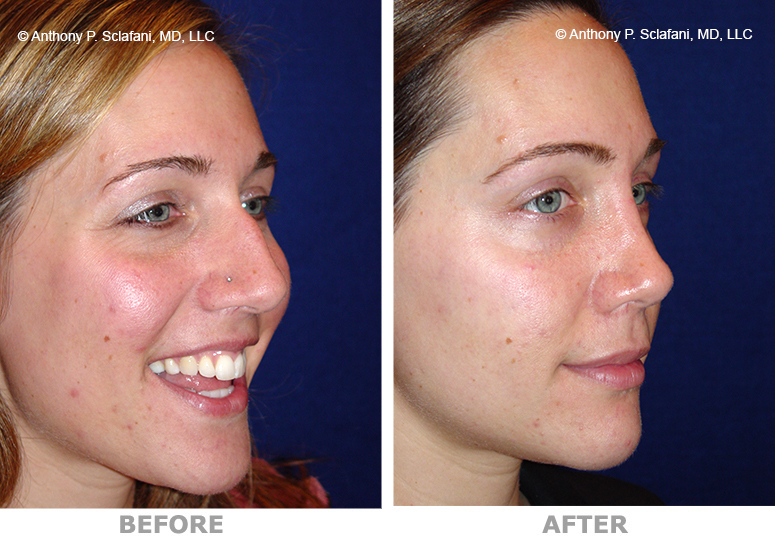
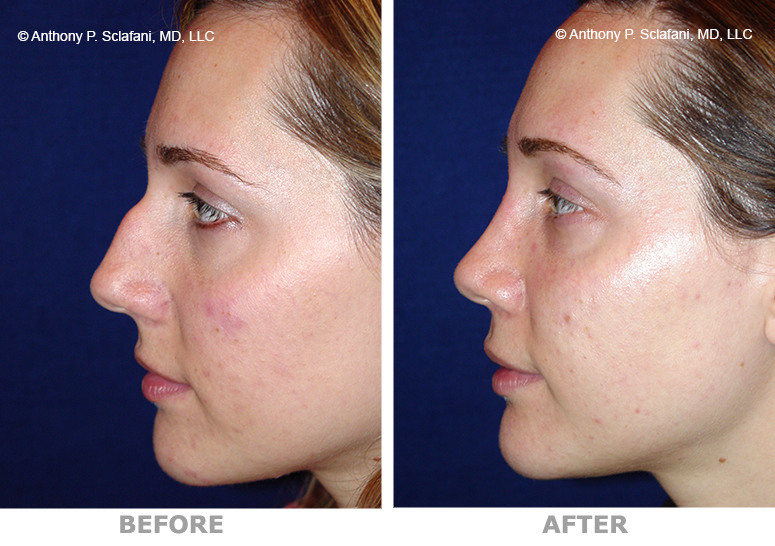
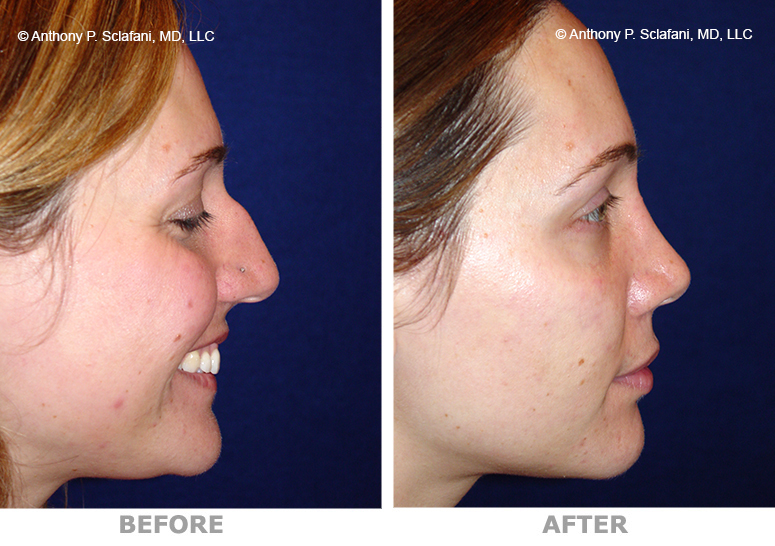
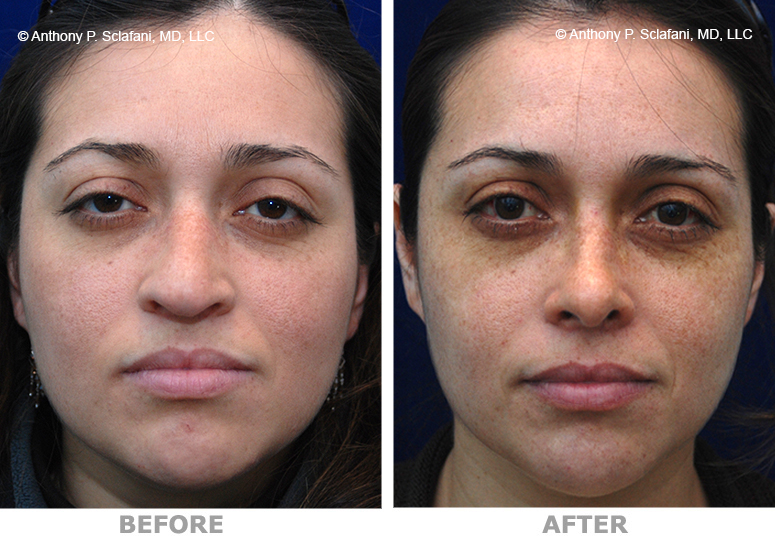
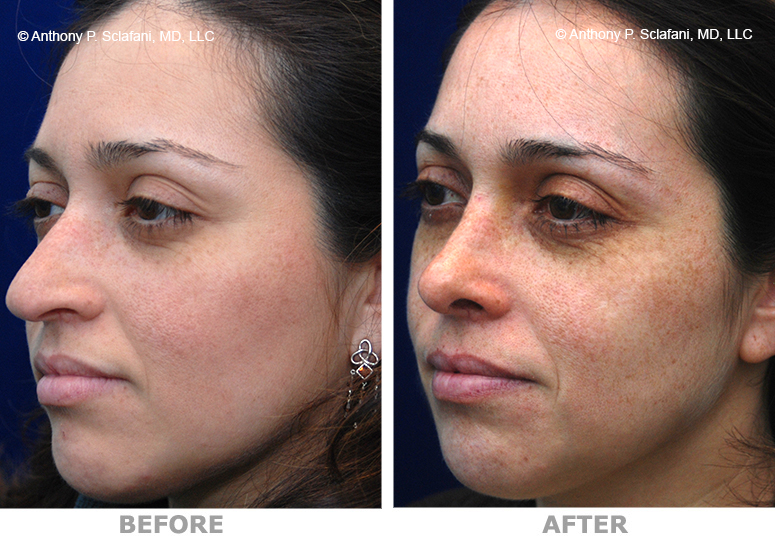
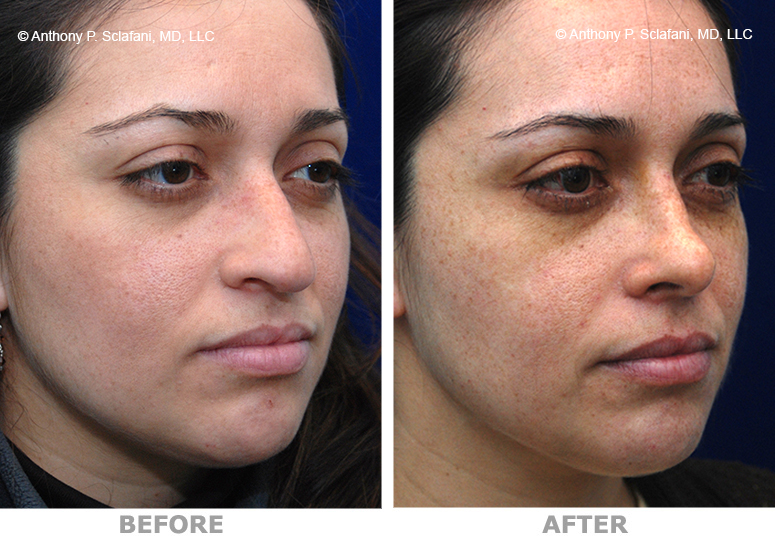
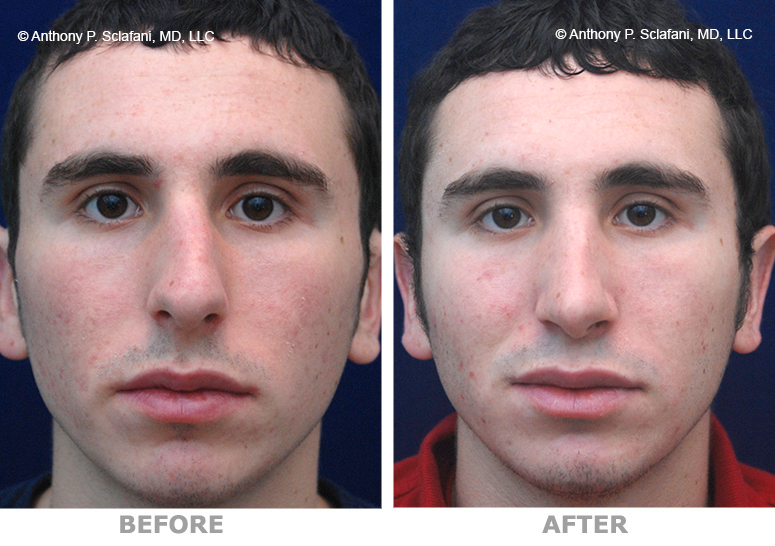
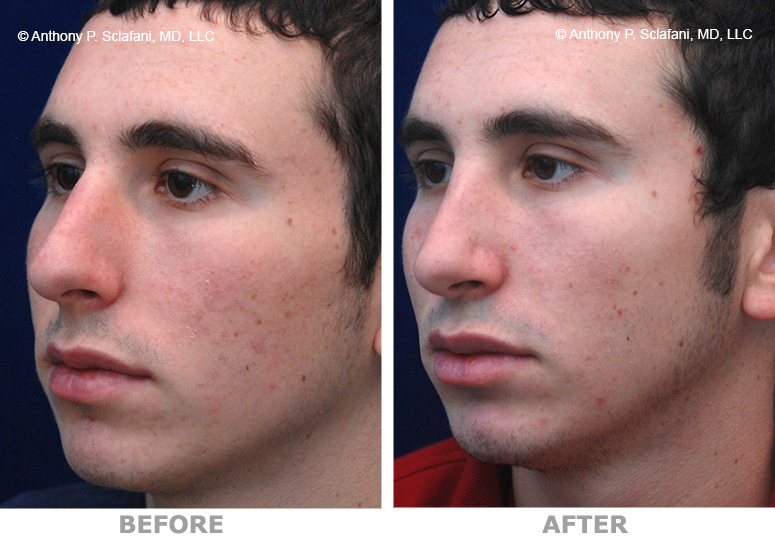
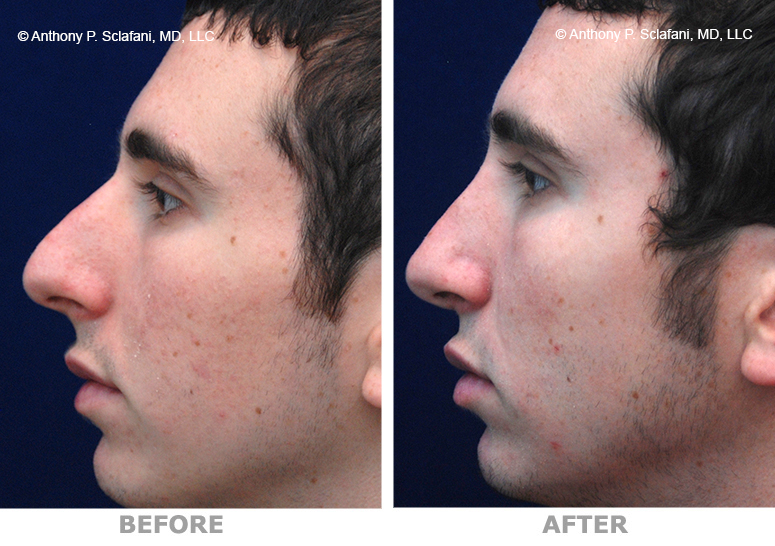
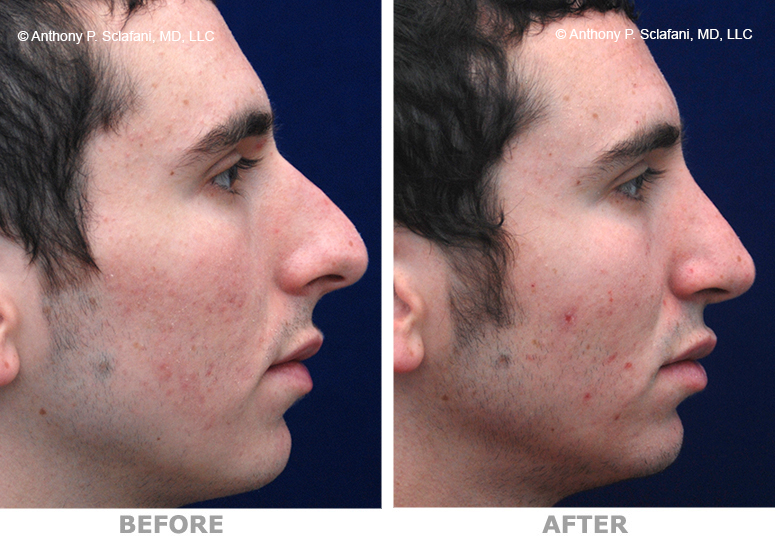
Cleft lip deformity often requires nasal surgery to correct asymmetries and is usually done between the age of 15-17 years old.
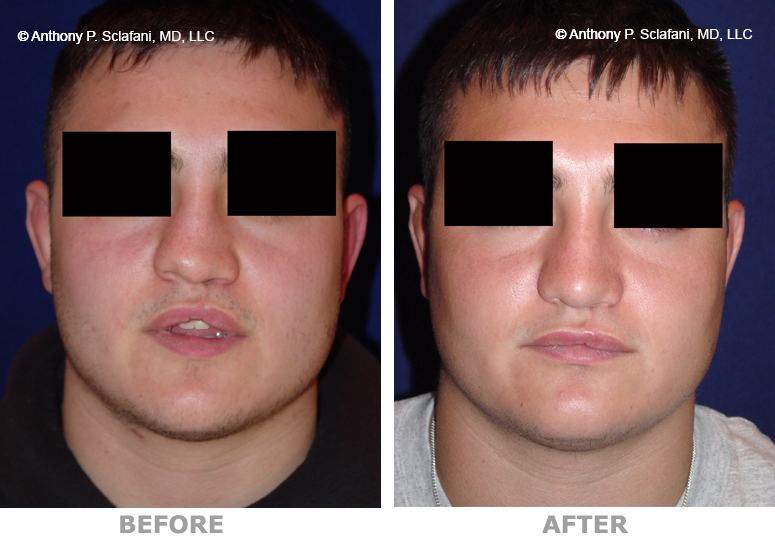
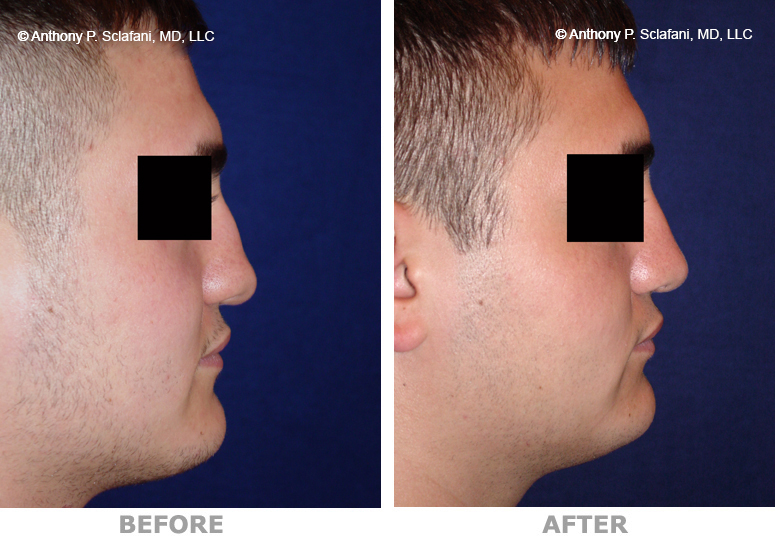
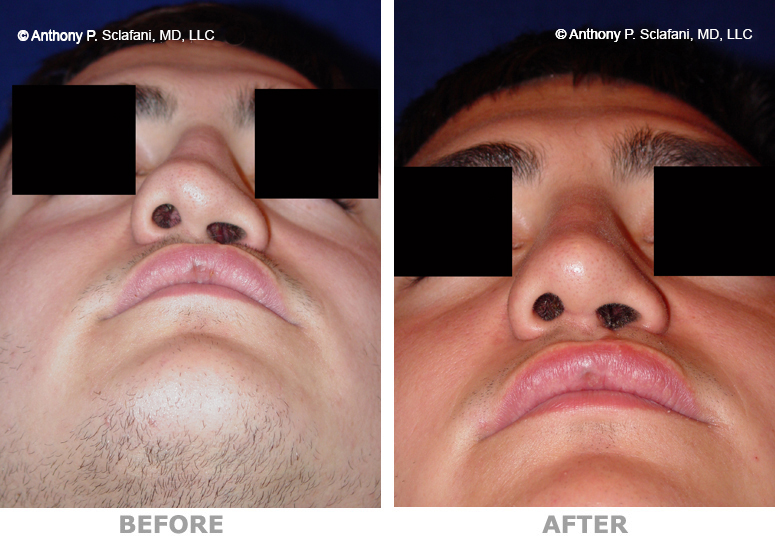
Nasal Surgery - Process and Procedure
The Process
Typically, septal surgery is performed through internal nasal incisions. The septum is composed of cartilage (towards the front) and bone (in the back and along the bottom). After elevating the delicate mucus membranes, cartilage can be removed, as long as an "L" shaped strut is preserved to support the tip and the bridge. The cartilage that is removed is sometimes recycled for grafting elsewhere in the nose. The nasal valve can be modified with such grafts; the surgery is tailored uniquely to each patient.The turbinates can be pushed to the sides or trimmed to increase the amount of room available in the nose for airflow. These procedures are not designed to change the appearance of the nose, but rather are strictly for functional improvement.
Surgery of the external nose can be done with internal nasal incisions, or sometimes with similar internal incisions connected to an incision on the columella, the tissue below the nasal tip. This "external" approach allows for an unparalleled opportunity to diagnose and treat the problems of the nasal tip, and the scar fades rapidly in a few weeks.
Regardless of the incisions, the tip can be made narrower or more refined, can be turned upward or downward or displaced forward or backward, depending on the individual needs of the patient. The tip is made of small cartilages, the lower lateral cartilages. These can be modified by removing portions, augmenting them (with cartilage from the septum, for example) or by sewing them in precise ways with sutures.
The Procedure
The nasal bridge can be narrowed, straightened or widened as needed. The nasal profile can be raised or lowered, as appropriate. The bridge of the nose is comprised of cartilage (the top of the nasal septum in the center, and the paired upper lateral cartilages on the sides) and the nasal bones. While the cartilages can be shaved smaller, the bone is removed by fine files or by precisely cutting the bones. It is usually this work on the nasal bones that generates the bruising usually seen under the eyes after rhinoplasty. For nasal bridges that are too narrow or too low, cartilage grafts or implants can be use d to achieve excellent results.
The exact techniques used during a particular nasal operation depend on the individual needs for the patient. No two surgeries are alike, as each nasal operation is tailored to the specific needs of the patient. Nasal surgery demands careful analysis, a thorough understanding of the anatomy and physiology of the nose and an artistic understanding of the interrelation of the nose with the rest of the face.
Nasal Surgery - What to Expect Afterwards
What to Expect Afterwards
NASAL PACKING/CAST/STITCHES
Occasionally patients have a small amount of nasal packing initially after surgery, which is easily removed in the office. If changes were made to the appearance of the nose, a plastic waterproof cast is placed over the bridge; this remains in place for one week after surgery. Usually, flesh-colored tape is placed over the bridge (to reduce swelling) for the second week after surgery. All stitches used are dissolvable, except if an "open" approach is used. In that case, 5-7 stitches are removed from the area below the nasal tip around one week after surgery.
ACTIVITY AFTER SURGERY
In order to allow your tissues to heal properly, we ask that you refrain from brisk physical activity for one week. Walking and non-physical activities are allowed, but it is best not to exercise for the first week. After the first week, aerobics, running, stair climbing, exercise bicycling and treadmills are permitted, but weight lifting (free weights or machines) should not be done until after the end of the second week after surgery. However, once the effects of the anesthetics have worn off, it is not necessary to remain in bed or at home.
While we ask that you keep the nasal cast dry, you may shower while it is in place. Should the cast become wet, use a blow dryer (set on "cool") to lightly dry the cast.
SWELLING
Nasal swelling is expected and may not be really noticeable until after the splint is removed. Much of the swelling resolves in the first 10-14 days, and most subsides in 4-6 weeks. The swelling usually resolves in a "top- to- bottom" fashion, with nasal tip swelling taking the longest to subside. Subtle swelling (so little that you will notice changes on a "month-to-month", rather than a "day-to-day," basis) may persist for 6- 12 months.
BREATHING
Nasal breathing may be more difficult immediately after surgery due to swelling inside the nose. This "stuffiness" will subside gradually in 4-6 days after surgery, and IS NOT improved with decongestant nasal sprays. These sprays may actually cause damage to the nose, impair healing and SHOULD NOT be used. Saline (Salt-water) sprays may be used if desired, beginning one day after surgery. Do not blow your nose for the first week after surgery, as this may provoke a nose bleed.
BRUISING
Bruises following nasal surgery usually manifest themselves as "black eyes". In order to limit bruising and swelling, ice compresses should be applied over the forehead, both cheeks and eyelids for the first 24-36 hours after surgery. Compresses should be applied for 20 minutes at a time, with 20 minutes before reapplying. Also, homeopathic medications Arnica Montana and Bromelain may limit bruising and swelling. This is best started at least 1 week before surgery and continued for 3 weeks; check with your doctor before using these. Most bruising will disappear in 5-7 days, with the rest resolving in 2 weeks. This may be concealed with makeup if desired.
BLEEDING
Bloody stained drainage is common in the first 48 hours after surgery, and does not represent significant bleeding. Blood- tinged nasal mucus may persist for 1-2 weeks following surgery. Profuse bleeding is unusual. Should this occur, pinch the base of the nose against the bone above the upper teeth firmly for 10 minutes without interruption. If this does not stop the bleeding, call our office immediately.
ITCHING/NUMBNESS
Itching, numbness and a "wooden" feeling to the nose are common after rhinoplasty. All of these do subside, although it may take a few months for your nose to feel completely "normal".
PAIN/DISCOMFORT
As surprising as it may sound, most patients experience little discomfort after nasal surgery. Most complain of a headache and nasal congestion on the night after surgery. Once nasal packing is removed the day after surgery, this discomfort resolves, and patients usually manage their pain with Tylenol.
Rhinoplasty Gallery
Revision rhinoplasty presents unique challenges, as normal structure has been altered and scar tissue has develop after the prior surgery. A natural appearing nose with good function is always the goal.
Cheek and chin implants can help balance facial elements and bring the appearance of the face into better balance.

